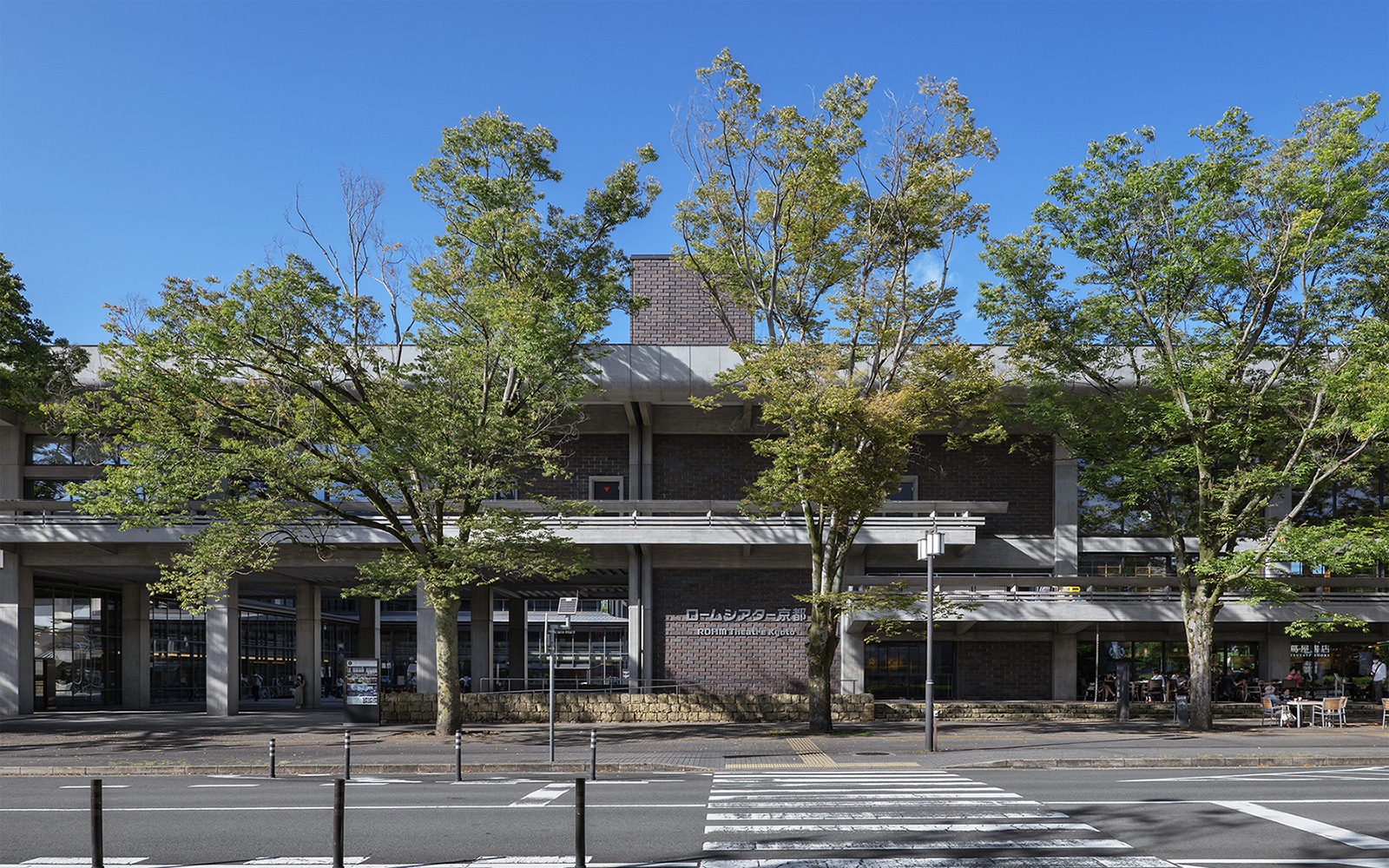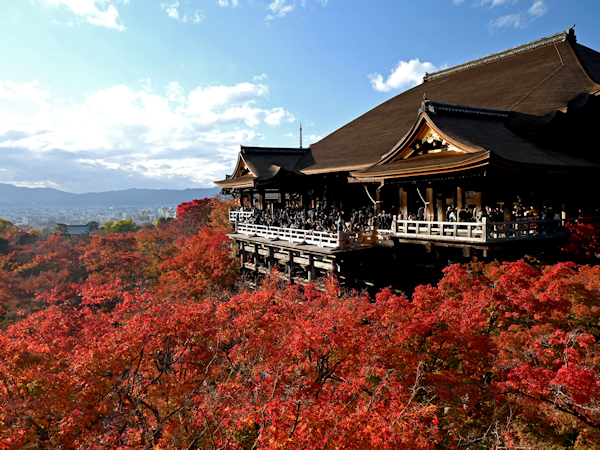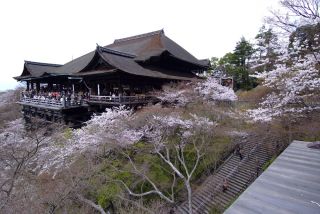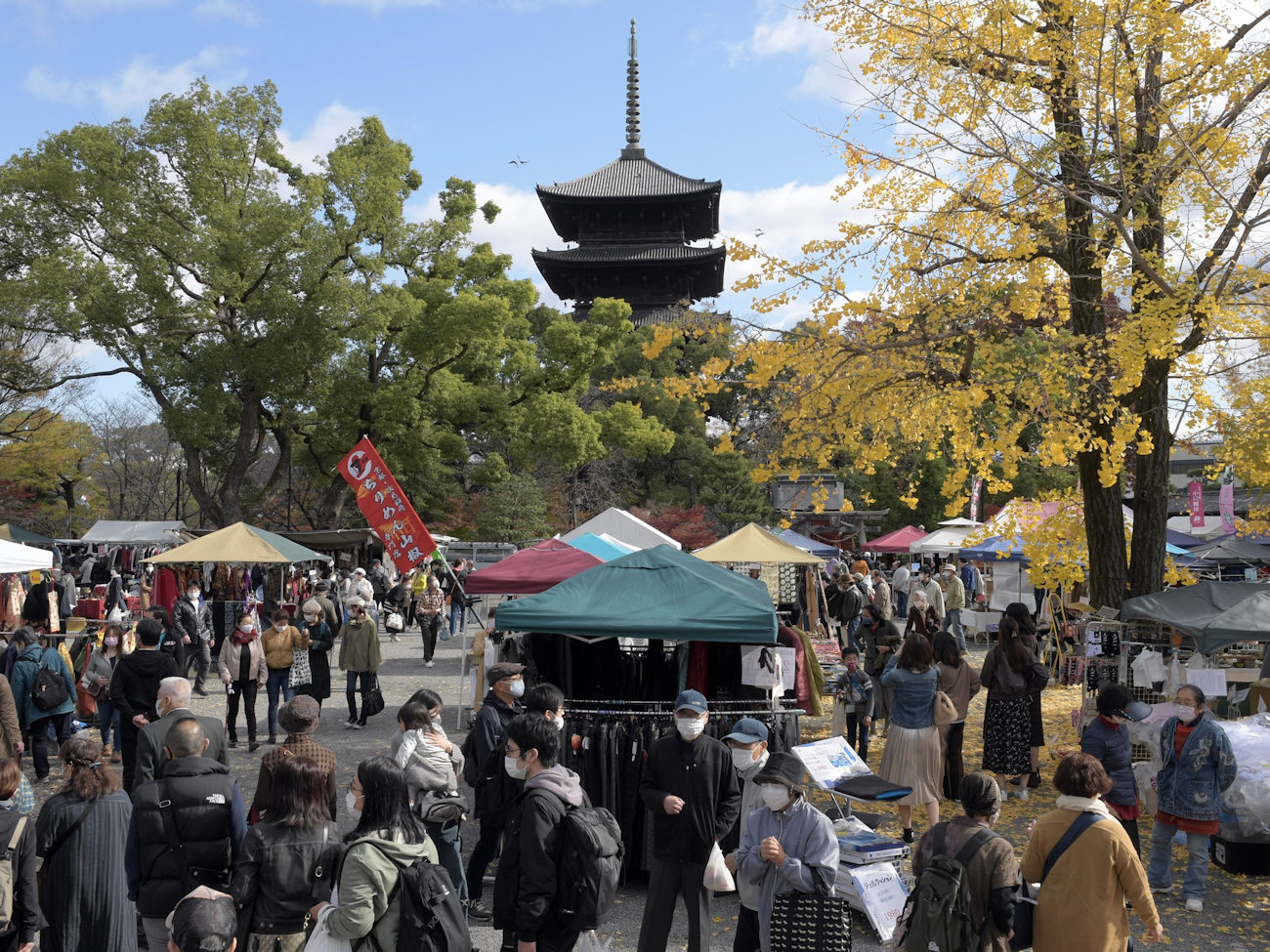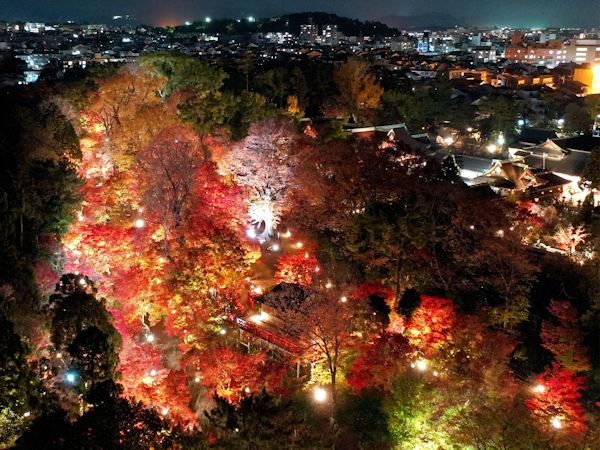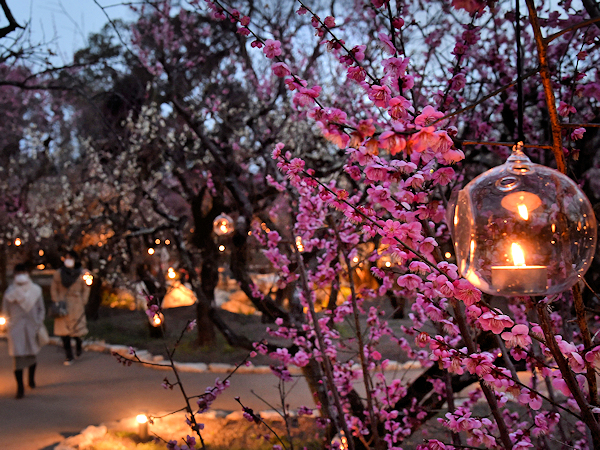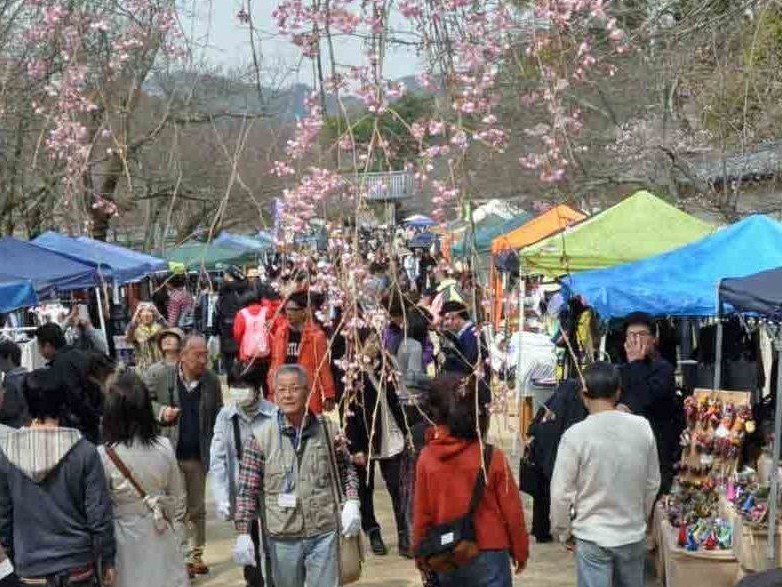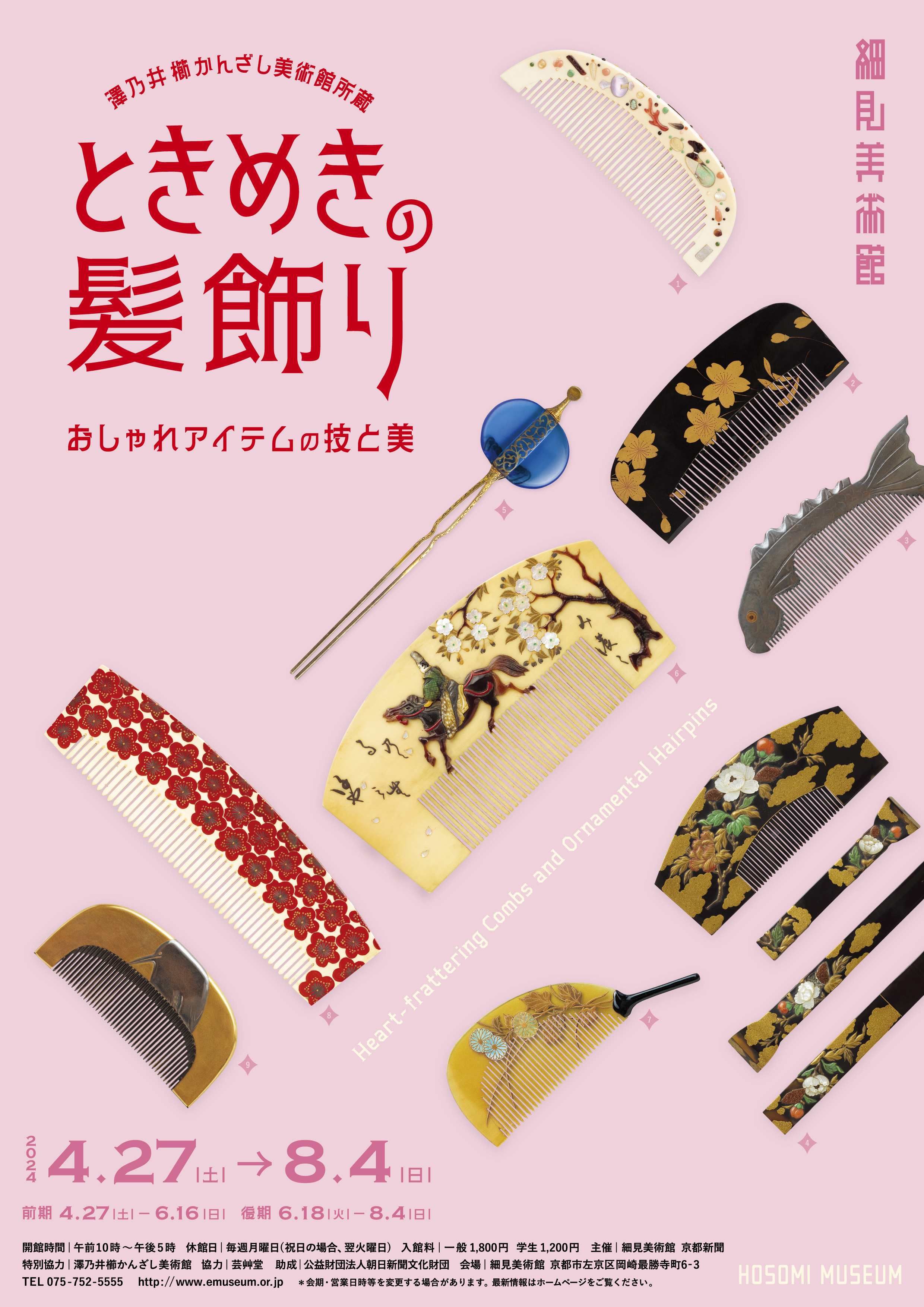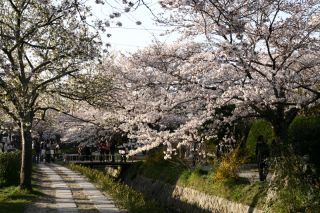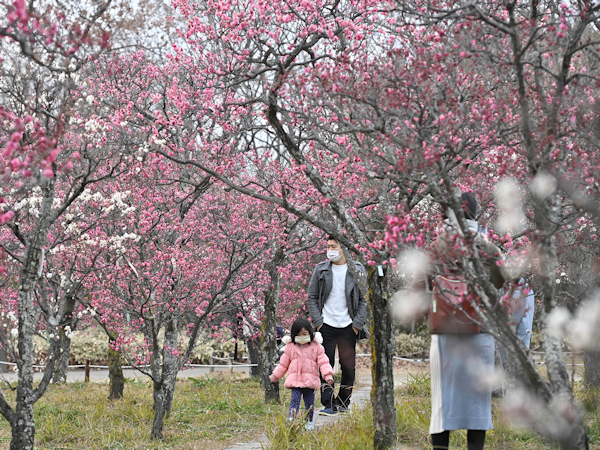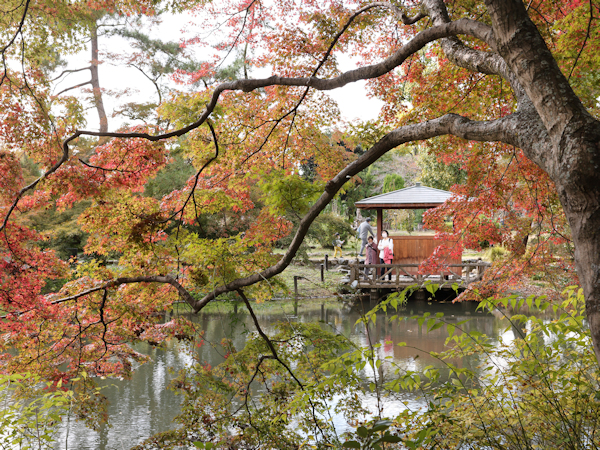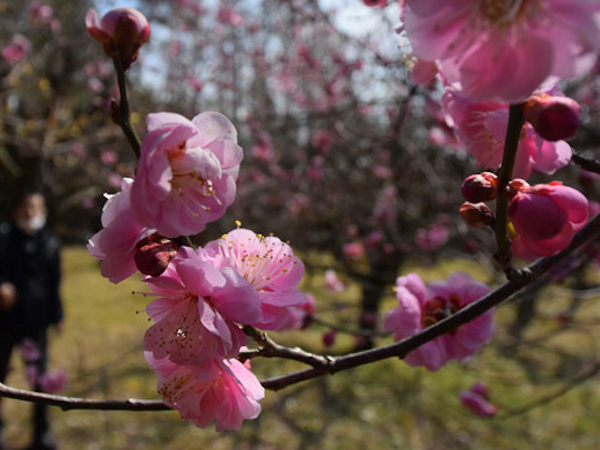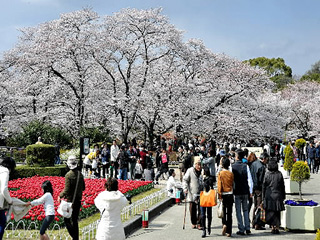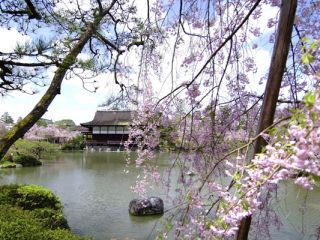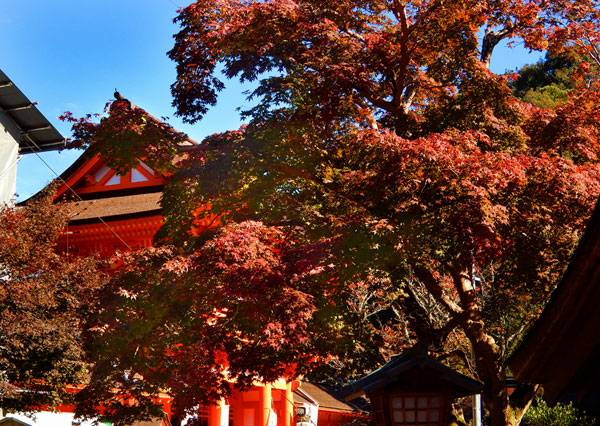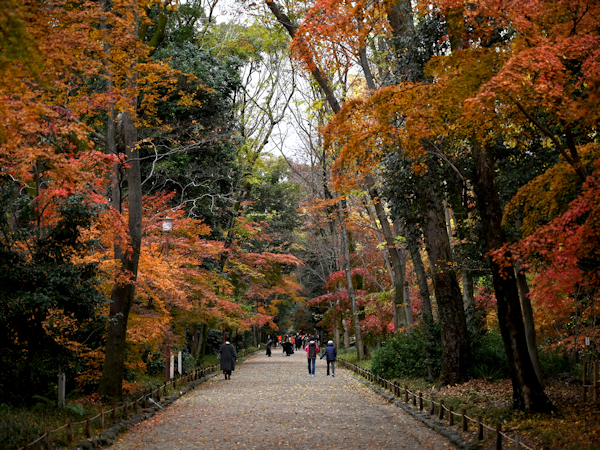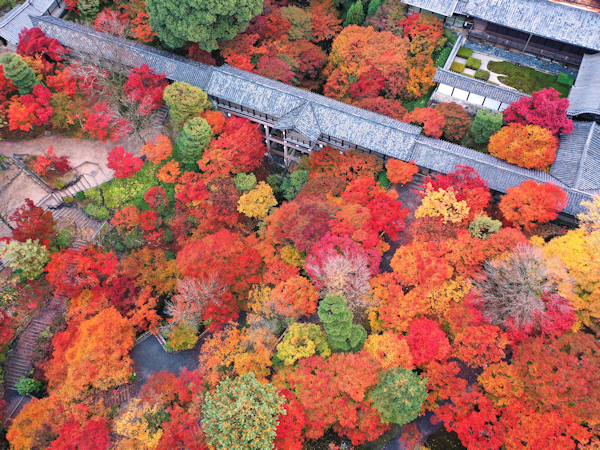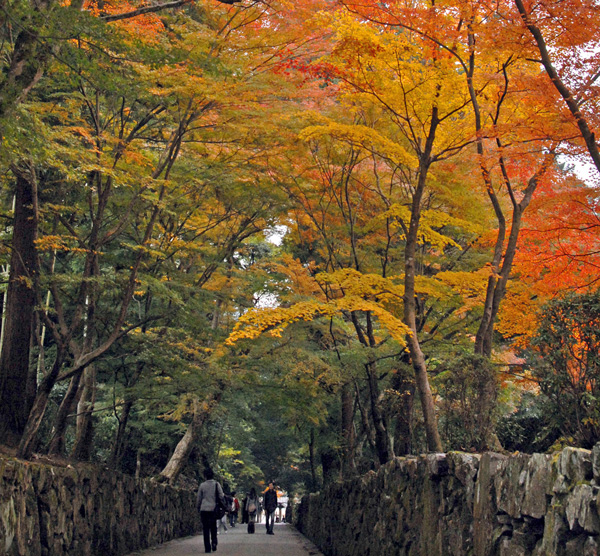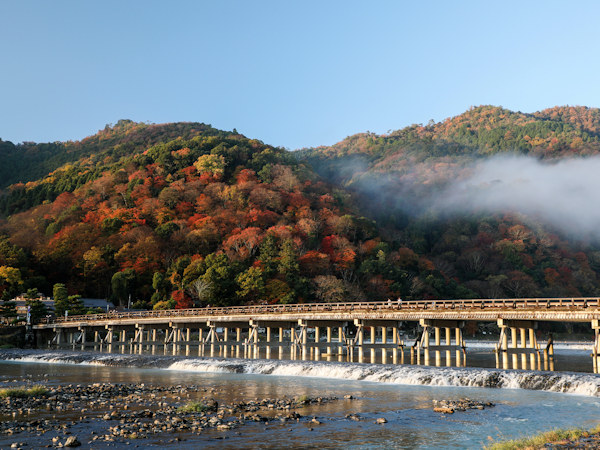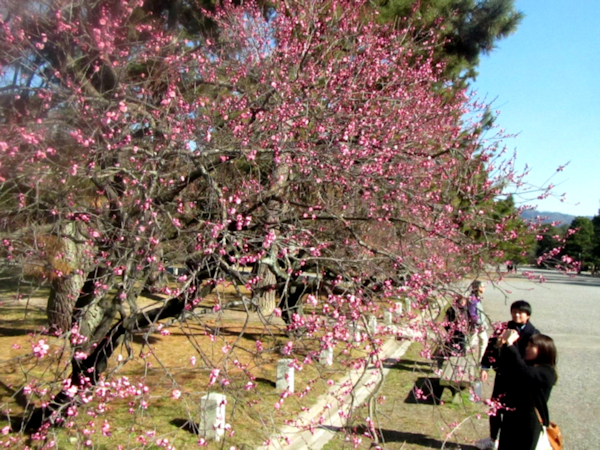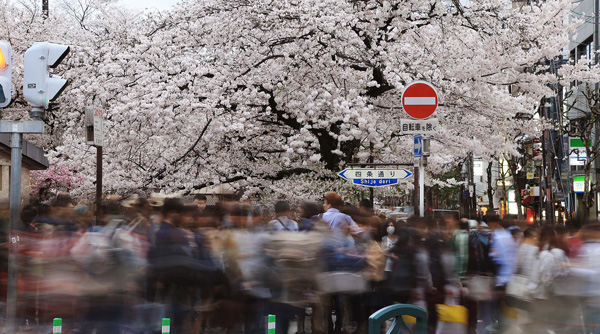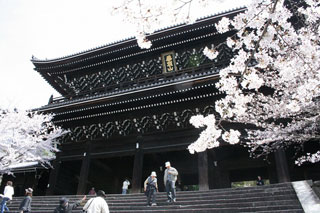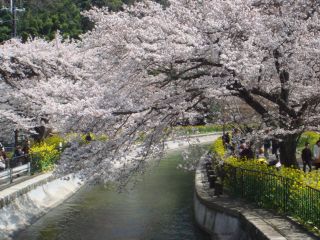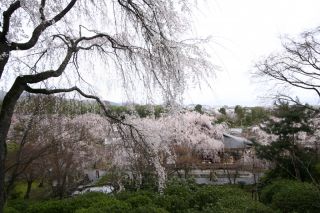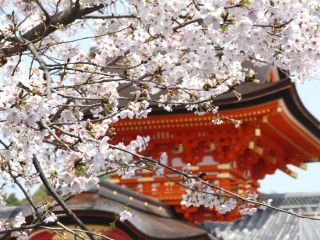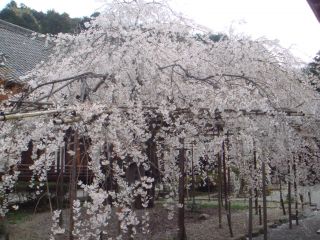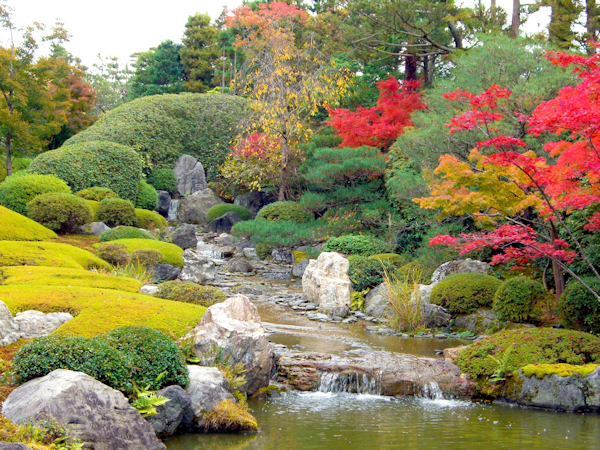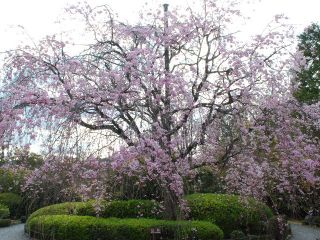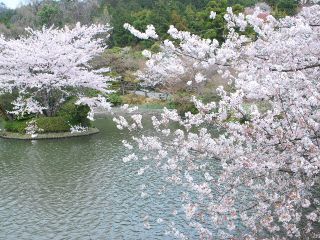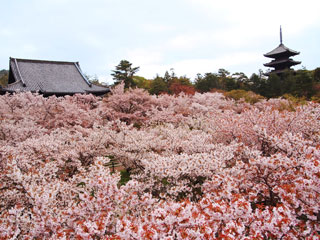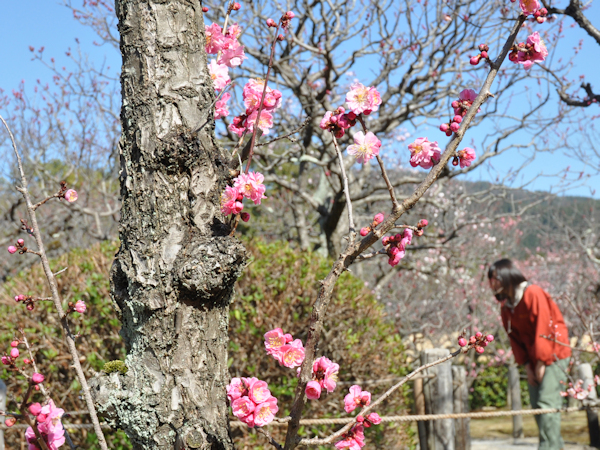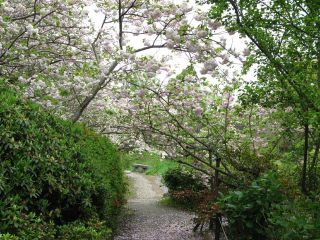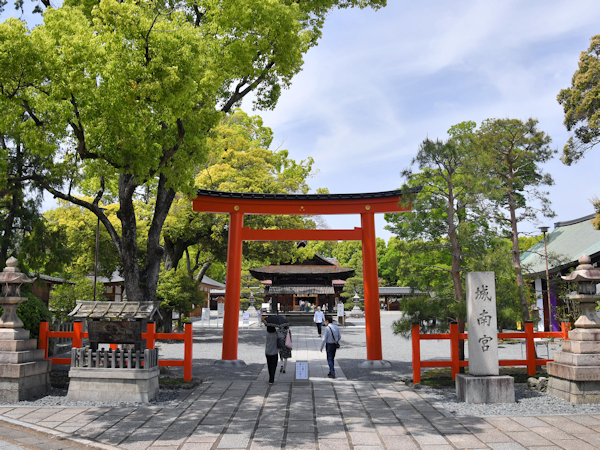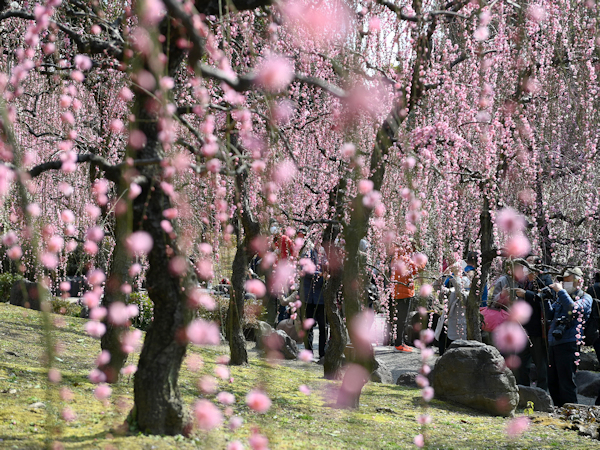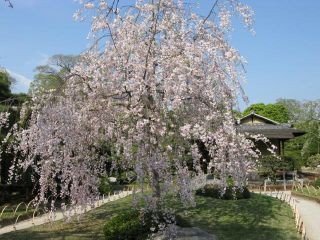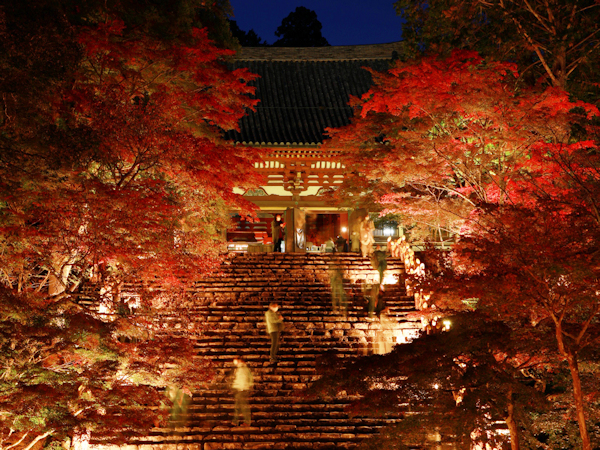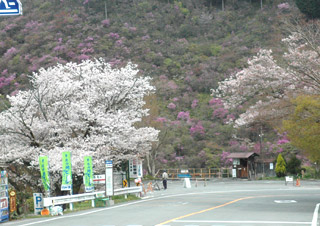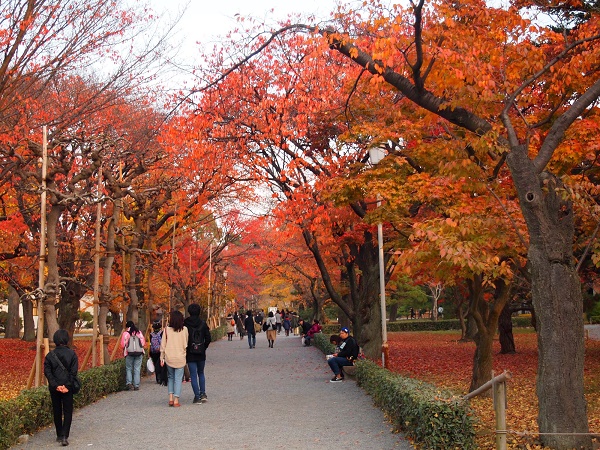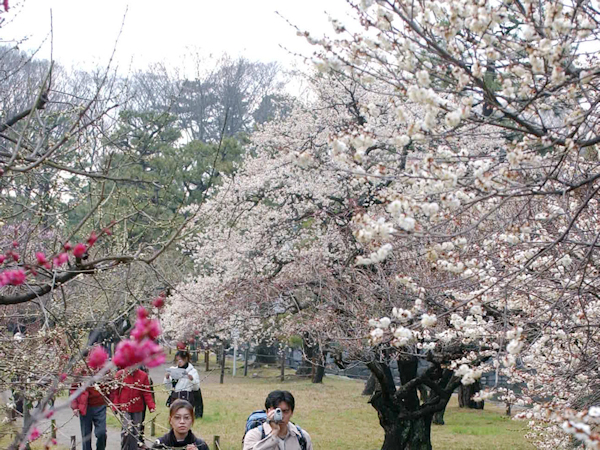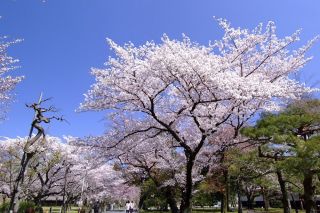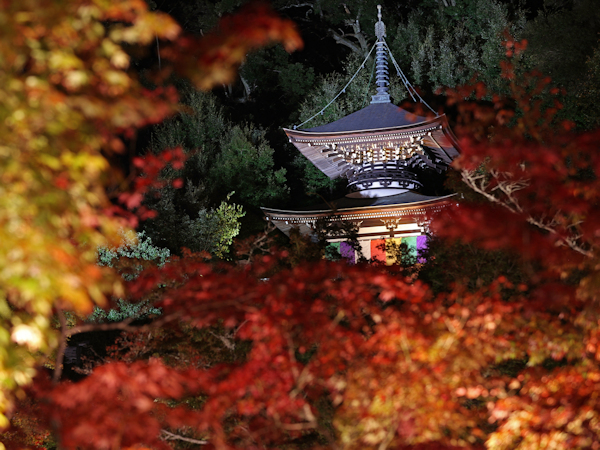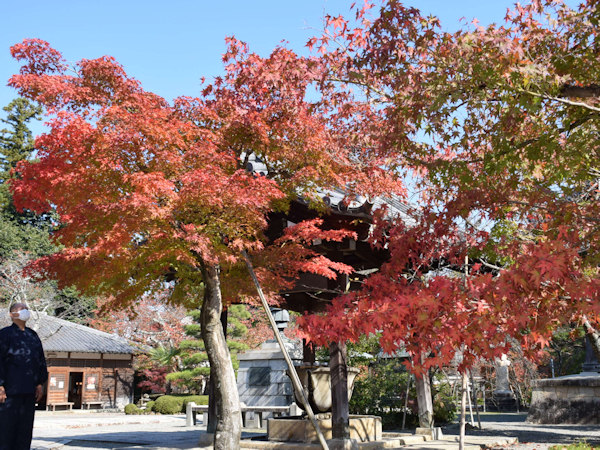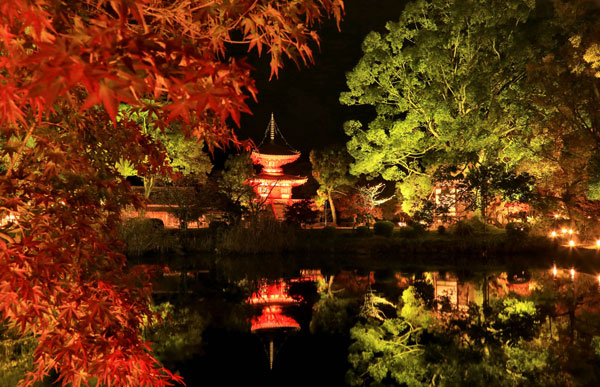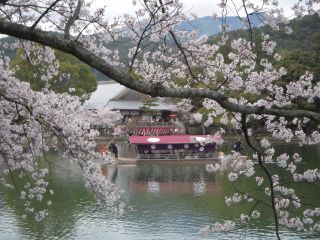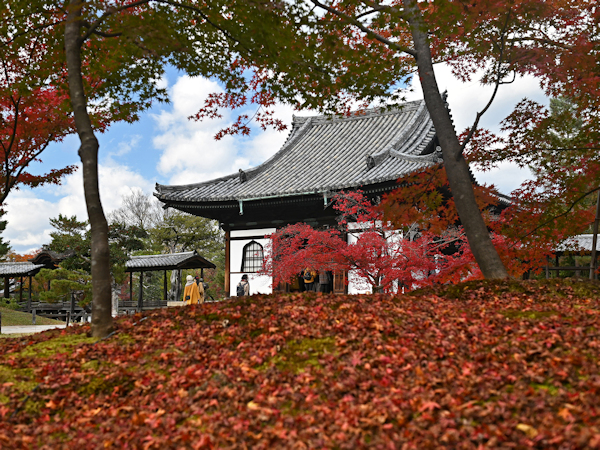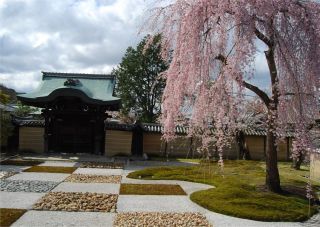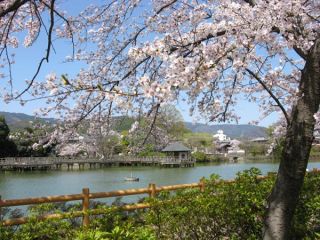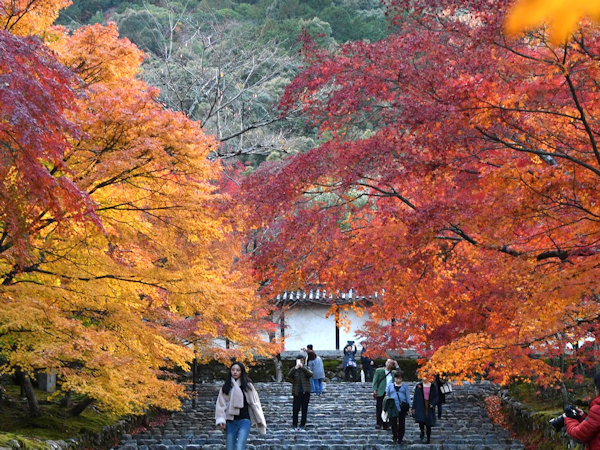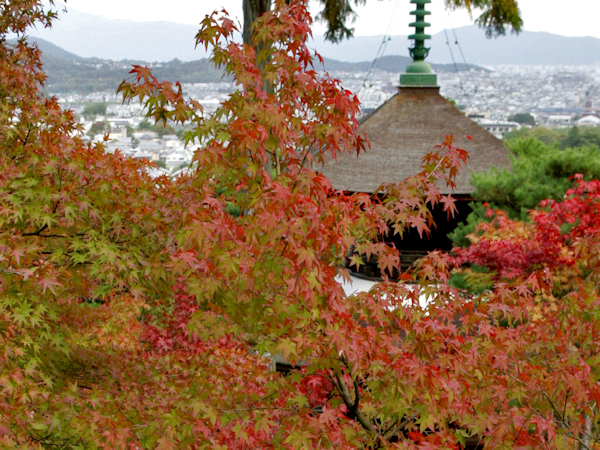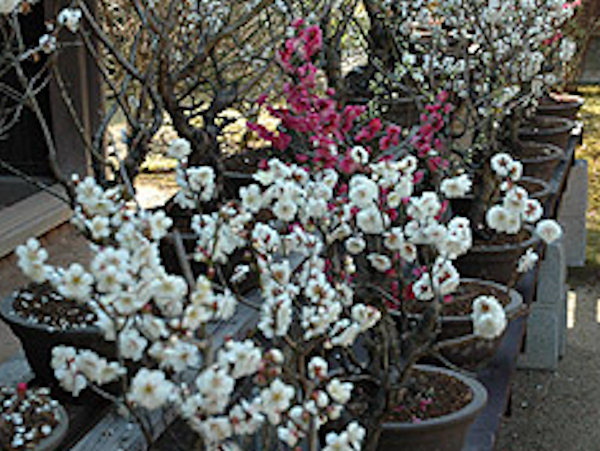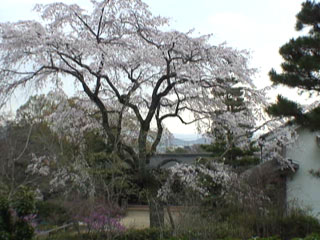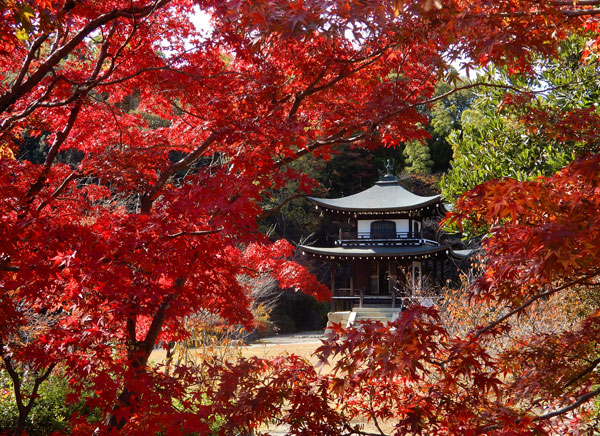Kyoto Event Guide Map Kyoto Shinbun&Stroly presents
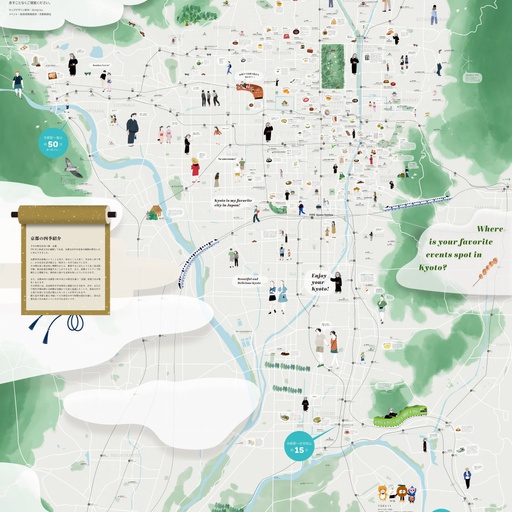
This digital map provides information on events and seasonal highlights of Kyoto at a glance.
Information on events taking place in Kyoto is also added from time to time on the map illustrations featuring long-established Japanese confectionary shops!
Enjoy the delicious wagashi and the seasons of Kyoto, and enjoy all the events and spots that interest you.
(Map produced by Stroly Inc. / Contents provided by Kyoto Shimbun)
update date: 2024.07.24
このマップ(地図)を見るNumber of spots : 60spots
-
ROHM Theatre Kyoto
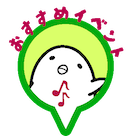 Event Spot
Event Spot
ROHM Theater Kyoto has a main hall with approximately 2,000 seats that can host large-scale domestic and international performances, a south hall with approximately 700 seats where the distance between the stage and the audience seats is close to create a sense of unity, and a hall that is suitable for use as a small theater or rehearsal room. This is a multipurpose hall with a north hall that can accommodate 200 people. In addition, Park Plaza, which has a book & cafe and restaurant, and Rohm Square, which can be used as an outdoor space, support a wide range of cultural activities and have been able to meet the diverse needs of providing a place of relaxation for everyone. It is a public cultural facility unlike any other. Address 13 Saishojimachi, Okazaki, Sakyo Ward, Kyoto CityGoogleMap URL Official Website SNS Instgram X(Twitter) Facebook Youtube Kyoto Shimbun Stroly Inc. (c) 1996- The Kyoto Shimbun Co.,Ltd. All rights reserved.
-
Matsuo-taisha Shrine
 Event Spot
Event Spot
It is said that the people who have lived in this area since ancient times worshiped the mountain spirit of Mt. Matsuo in Iwakura, the upper part of Osugidani near the summit, and revered it as the guardian deity of their lives.The area is known as the god of sake-making because the high-quality underground water has been used to make sake since ancient times. Even today, there is a good legend that if you brew sake by adding spring water from Kamenoi, a sacred spring, to the base water, it will not spoil.The garden was created by Mirei Shigemori. The three gardens of Joko Garden, Kyokusui Garden, and Horai Garden are also worth seeing. In mid-April, as many as 3,000 Yamabuki trees are in full bloom all around the grounds. Address 3 Arashiyama Miyamachi, Nishikyo Ward, Kyoto City, Kyoto PrefectureGoogleMap Openinghours Weekdays/Saturdays 9:00 a.m. to 4:00 p.m.Sundays and holidays 9:00 a.m. to 4:30 p.m. Fee Adult 500 yenStudent 400 yenChild 300 yen(Common to garden and statue hall) URL Official Website SNS Instgram Kyoto Shimbun Video Library Kyoto Shimbun Stroly Inc. (c) 1996- The Kyoto Shimbun Co.,Ltd. All rights reserved.
-
Tanukidanisan-hudouin
 Event Spot
Event Spot
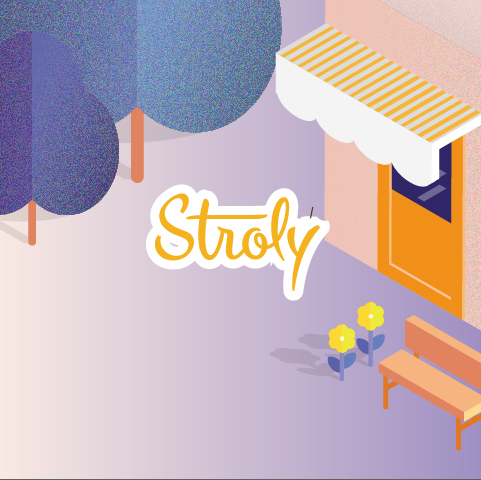
Ho-Atsubo Shozen Priest (Mokushoku Shozen Yoa Shonin, 1687 - 1763) learned the essentials of the four sects of Zen, Ritsu, Shingon, and Tendai from a young age. , I learned how to eat wood at Mt. Koya. In 1715, he discovered a cave called Tanukidani in Ichijoji Village in Rakuhoku, and began his Sankago training here. During his training, he also experienced the arduous pilgrimage to Kumano, and Tanukidaniyama Shugendo was born. Master Tomo Atsushi carved a statue of Fudo Myoo on Mt. Tanukidani and made it the principal image of Shugendo. After the Meiji era, it faced the threat of deterioration, but in 1944 it was rebuilt as Ichijoji Tanukitaniyama Fudoin, and its miraculous powers made it one of the most sacred places of worship in the Kansai region. Address 6 Ichijoji Matsubaracho, Sakyo Ward, Kyoto City, Kyoto Prefecture 606-8156GoogleMap URL Official Website SNS Instgram X(Twitter) Facebook Kyoto Shimbun Stroly Inc. (c) 1996- The Kyoto Shimbun Co.,Ltd. All rights reserved.
-
Anrakuji Temple
 Event Spot
Event Spot

In the early Kamakura period (1192-1333), Anraku-ji temple was founded by Anraku and Juren, disciples of Honen, who popularized the chanting of Namu Amida-Butsu ("I worship thee, Amida Buddha"). Honen's teachings brought solace to commoners during a turbulent era transitioning from aristocratic to feudal rule. However, opposition from the imperial court, fearing social unity and stability would be compromised, led to the persecution of Honen, Anraku, Juren, and Honen's followers. This event, known as the "Kenei Persecution" (1207), marked a rare instance of severe suppression in Japanese Buddhist history. Anraku-ji temple was later rebuilt to honor the memories of those affected. Address 21 Shikagaya Gosho-no-Dancho, Sakyo-ku, Kyoto 606-8422GoogleMap URL Official Website Kyoto Shimbun Stroly Inc. (c) 1996- The Kyoto Shimbun Co.,Ltd. All rights reserved.
-
Kamishichiken Kaburenjo
 Event Spot
Event Spot
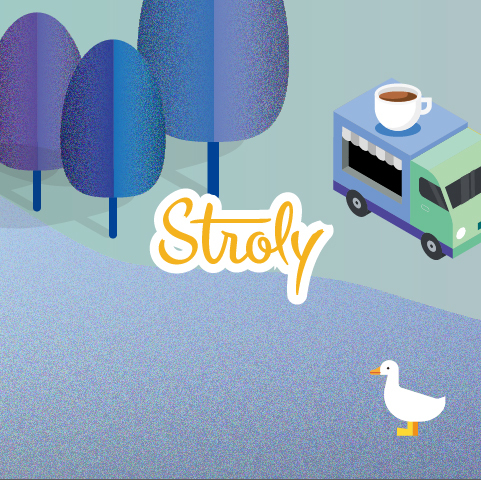
Kyoto's oldest red-light district, Kamishichiken is a teahouse town located on the east approach to Kitano Tenmangu Shrine. It flourished as a back parlor in the textile town of Nishijin, and continues to inherit the will and traditions of its predecessors while devoting itself to the arts. In particular, at Kamishichiken Kaburenjo, events such as "Kitano Odori" are held in the spring, "Beer Garden" is held in the summer, and "Kotobuki-kai" is held in the fall. We look forward to your visit. Address 742 Masamori-cho, Imadegawa-dori Gozen-dori, Higashiiri, Kamigyo-ku, Kyoto 602-8381GoogleMap URL Official Website SNS Instgram Facebook Kyoto Shimbun Video Library Kyoto Shimbun Stroly Inc. (c) 1996- The Kyoto Shimbun Co.,Ltd. All rights reserved.
-
Kiyomizu Temple
 Event Spot
Event Spot
Autumn Foliage Cherry Blossoms Autumn leaves:2021 shooting Cherry blossoms photographed in 2010 Otowasan Kiyomizudera is a famous temple in Kyoto that was founded in 778 and has a history of over 1,250 years. Known as a sacred place for Kannon, it has been loved by the common people. There are more than 30 temples and temples within the temple grounds, including national treasures and important cultural properties, which were rebuilt with deep faith despite suffering more than 10 fires. The current building was rebuilt in 1633 and was added to the UNESCO World Heritage List in 1994. Address 1-294 Shimizu, Higashiyama-ku, Kyoto-shi, Kyoto PrefectureGoogleMap Openinghours 6:00~18:00(Depends on the time of year.For more information.) Fee Adults 400 yen, elementary and junior high school students 200 yen Neareststation Get off at Keihan Railway "Kiyomizu Gojo" station and walk for about 25 minutes / Take the Kyoto city bus from JR "Kyoto" station or Hankyu train "Shijo Kawaramachi" station and get off at "Kiyomizu-michi" and walk about 10 minutes. URL Official Website SNS Instgram Facebook Youtube Kyoto Shimbun Video Library Kyoto Shimbun Stroly Inc. (c) 1996-2024 The Kyoto Shimbun Co.,Ltd. All rights reserved.
-
Toji Temple
 Event Spot
Event Spot
Kobo market held on the 21st of every month Toji Temple is the only remaining structure in Heiankyo, with a history of approximately 1,200 years, and was registered as a World Heritage Site in 1994. Emperor Saga entrusted the construction of To-ji to Kobo Daishi Kukai, who studied esoteric Buddhism in the Tang Dynasty, making it Japan's first esoteric Buddhist temple. Inside the temple, there is a vast temple area centered around Dainichi Nyorai, and tea is still served every day in the Mieido hall, just like when Kobo Daishi visited. Location 1 Kujo-cho, Minami-ku, Kyoto-shi, Kyoto PrefectureGoogle Map Time 5:00〜17:00 ・Kondo, Auditorium8:00-17:00 ・Kanchi-in9:00-17:00(Registration ends at 16:30) ・Treasure Hall 9:00-17:00 (Registration ends at 16:30)(only during the exhibition period) Fees Entry to the Mieido hall, dining hall, etc. is free. Other charges apply. Access ・15 minutes walk from "JR Kyoto Station" Hachijo Exit (approx. 1.1km) ・10 minutes walk from "Kintetsu Railway Toji Station" (about 0.6 km) URL Official HP SNS Instgram Kyoto Shimbun Video Library Kyoto Shimbun Stroly (c) 1996-2024 The Kyoto Shimbun Co.,Ltd. All rights reserved.
-
Kitano Tenmangu Shrine
 Event Spot
Event Spot
Autumn Foliage Plum Blossoms Autumn leaves:2021 shooting The plum blossoms are blooming Kitano Tenmangu Shrine is the head office of approximately 12,000 Tenmangu shrines and shrines nationwide that enshrine Sugawara no Michizane (Ko Suga) as the deity. Known since ancient times as ``Tenjin-sama of Kitano'', it is widely believed to be a shrine for entrance exams, academic success, culture and entertainment, and prayers for warding off disasters and misfortune. Address Bakurocho, Kamigyo Ward, Kyoto City, Kyoto PrefectureGoogleMap Openinghours 7:00 a.m. - 5:00 p.m. Fee Free of charge in the precincts. Neareststation Get off at Kyoto City Bus "Kitano Tenmangu-mae" station / Get off at Randen "Kitano Hakubaicho" station and walk for about 5 minutes URL Official Website SNS Instgram X(Twitter) Kyoto Shimbun Video Library Kyoto Shimbun Stroly Inc. (c) 1996-2024 The Kyoto Shimbun Co.,Ltd. All rights reserved.
-
Daigoji Temple
 Event Spot
Event Spot
Daigo Market events held on the 29th of every month Daigoji Temple boasts a history of over 1,000 years and is a treasure trove that preserves the precious heritage of wood and paper culture. Nurtured by the prayers of successive monks and many people, the temple preserves over 150,000 precious temple treasures from ancient times to the Middle Ages, including Buddhist statues, documents, and paintings. As of 2022, 75,537 national treasures and 430 important cultural properties have been designated, and in 1994 it was registered as a world cultural heritage site. Location 22 Daigo Higashioji-cho, Fushimi-ku, Kyoto-shi, Kyoto PrefectureGoogle Map Time SummerMarch 1st - 1st Sunday of December 9am - 5pm Winter periodThe day after the first Sunday in December to the last day of February 9:00 a.m. to 4:30 p.m. *Reception closes 30 minutes before closing time(Visit times may change during the spring period) Fees It depends on the time. For details, see Official HP Please see. Access 5 minutes walk from Daigo Station on the Tozai Subway Line. Link Official HP SNS Instgram facebook Youtube Kyoto Shimbun Video Library Information provided by: Kyoto Shimbun > Technology provided by: Stroly (c) 1996-2024 The Kyoto Shimbun Co.,Ltd. All rights reserved.
-
Kyoto City KYOCERA Museum of Art
 Museum
Museum

Paris Pompidou Center Cubism Exhibition - Revolution of Beauty From Picasso and Braque to Delaunay and Chagall Takashi Murakami Mononoke Kyoto Saturday, February 3, 2024 - Sunday, September 1, 2024 Closed on Mondays (open on public holidays) We will be holding a large-scale solo exhibition by Takashi Murakami, a contemporary artist who is active around the world. Murakami will be exhibiting many new works that have been reconstructed based on his own interpretations and quotations of representative works by artists who were active mainly in Kyoto during the Edo period, as well as works that have never been shown in Japan. Please come and see us at the venue. DurationFebruary 3rd (Saturday) - September 1st (Sunday)10am - 6pm (Last admission 30 minutes before closing)Closed on Mondays (holidays)・Open on holidays)VenueKyoto City Kyocera Museum of Art New Building Higashiyama Cube (124 Okazaki Enshoji-cho, Sakyo-ku, Kyoto City)ContentsNewly drawn Approximately 170 works will be exhibited, including representative series such as the masterpiece "Rakuchu Rakugai-zu Iwasa Matabei rip" and works with the theme of the Four Gods.Admission feeGeneral 2200 (2000) yen; 1,500 (1,300) yen for professionals and university students, 1,000 (800) yen for high school students, free for junior high school students and under.Advance tickets and group rates for 20 or more people are in parentheses. Free for those who present a disability certificate and one caregiver *Other special tickets are available. Advance tickets are now on sale at museum online tickets and other major play guidesOrganizersKyoto City, Asahi Shimbun, Kyoto Shimbun, NHK Kyoto Broadcasting Station, NHK Enterprises Kinki Creative PartnerSony Music EntertainmentProduction CooperationNHK PromotionSpecial CooperationKaikai Kiki Co., Ltd., Perrotin, Gagosian Address Kyoto City KYOCERA Museum of ArtSee location on GoogleMap. URL Official website 情報提供:京都新聞 技術提供:Stroly Inc. (c) 1996-2024 The Kyoto Shimbun Co.,Ltd. All rights reserved.
-
Hosomi Museum
 Museum
Museum
Exciting hair ornaments from the Sawanoi Kushi Kanzashi Museum collection - The skill and beauty of fashionable items - Exciting hair ornaments from the Sawanoi Kushi Kanzashi Museum collection - The skill and beauty of fashionable items - The late Tomoyo Okazaki, who was born in Gion, Kyoto and became a geisha and later worked as a proprietress of a Japanese restaurant in Tokyo, spent more than 40 years collecting over 3,000 accessories, mainly combs and hairpins. Please enjoy the essence of the Sawanoi Kushi Kanzashi Museum, which continues to deliver excitement to its viewers without dissipating its collection.PeriodFirst semester = April 27th (Sat) - June 16th (Sun)Second period = June 18th (Tuesday) to August 4th (Sunday)10am to 5pmClosed on Mondays (closed on the following Tuesday if Monday is a holiday)VenueHosomi Art MuseumOkazaki Saishojimachi, Sakyo Ward, Kyoto City075(752)5555ContentJapanese craft techniques such as combs and hairpins collected with Mr. Okazaki's high aesthetic sense, models of various hairstyles from the Edo period, hakoseko (makeup pouches), beniita (lip palettes), and kimonos. Introducing carefully selected works that encapsulate the essence of style.Admission feeGeneral 1800 yenStudent 1200 yenSponsored by: Hosomi Museum, Kyoto ShimbunSpecial cooperation: Sawanoi Kushi Kanzashi Museum Address Hosomi MuseumSee location on GoogleMap. URL Official website 情報提供:京都新聞 技術提供:Stroly Inc. (c) 1996-2024 The Kyoto Shimbun Co.,Ltd. All rights reserved.
-
Kyoto City University of Arts Art Museum
 Museum
Museum

Special Exhibition to Commemorate the Relocation Kyoto University of the Arts Story Special Exhibition to Commemorate the Relocation Kyoto University of the Arts Story A special exhibition will be held to commemorate the relocation of Kyoto City University of Arts to the east area of Kyoto Station and the accompanying renewal opening of the art museum. Since its founding in 1880, Kyoto University of the Arts has undertaken a variety of educational and research endeavors and produced distinctive graduates. This exhibition will be divided into four periods under the theme of "Firsts," and over the course of one year will introduce the enterprising spirit of Kyoto University of the Arts through a variety of works and materials, mainly from the art museum's collection.Period1st period = April 6th (Sat) - June 2nd (Sun)2nd period = June 15th (Saturday) to August 12th (Monday/Shinkyu)3rd period = September 21st (Sat) - November 24th (Sun)4th period = December 7th (Sat) - February 11th, 2025 (Tuesday/Holiday)Closed on Mondays (or the following weekday if Monday is a holiday), outside of exhibition periods, and during the university's winter holidays (December 27th to January 3rd, 2019)VenueKyoto City University of Arts Art Museum(1st floor, C Building, Kyoto City University of Arts, 57-1 Shimonomachi, Shimogyo-ku, Kyoto City)ContentThe first exhibition will focus on the graduation works of painters who were active in the Kyoto art world during the Taisho era, such as Ono Chikutaka and Tsuchida Bakusen, during their time at the Kyoto City Painting College.The second period includes works and materials related to the establishment of the Kyoto Prefectural Painting School in 1880.The third season introduces the school's first graduate, Momorei Nishikawa, the first Western painting graduate, Hara Nadematsu, and the first female graduate, Koyama Hosoka.In the fourth period, we will look back at the period from the postwar period to around 1980.Admission fee: FreeSponsor: Kyoto City University of ArtsCo-sponsored by: Kyoto Shimbun Address Kyoto City University of Arts Art MuseumSee location on GoogleMap. URL Official website 情報提供:京都新聞 技術提供:Stroly Inc. (c) 1996-2024 The Kyoto Shimbun Co.,Ltd. All rights reserved.
-
Fujimori Shrine
 Tourist attractions
Tourist attractions

Hydrangea spots It is an old shrine with deep ties to the imperial family, having been founded by Empress Jingu about 1,800 years ago. The main shrine was a gift from Emperor Nakamikado in 1712. In particular, our company is known as the shrine where the Ayame Festival originated, and today it is visited by people involved in horse racing (horse owners, jockeys, etc.) and horse racing fans as it is believed to be the god of luck and horses. Location 612-0864609 Fukakusa Toriizaki-cho, Fushimi-ku, Kyoto-shi, Kyoto PrefectureView location on Google Map Access ・7 minutes walk from Keihan Sumizome Station・5 minutes walk from JR Fujimori Station Link Official HP SNS X(Twitter) Kyoto Shimbun Video Library Kyoto Shimbun Stroly (c)The Kyoto Shimbun Co.,Ltd. All rights reserved.
-
SUSTAINA KYOTO
 Tourist attractions
Tourist attractions

Hydrangea spots The Kyoto City Southern Clean Center's environmental learning facility, ``Sasutena Kyoto,'' utilizes the garbage processing facility itself. You can tour impressive large-scale facilities such as incinerators, waste power generation, and biogasification facilities up close, and use them as living teaching materials to learn about cutting-edge environmental technology. We also create experiential programs tailored to each life stage, covering a wide range of fields such as waste reduction, global warming, biodiversity, and local history from an environmental perspective. By arranging content for children, mainly for children, and content for adults, mainly including high-impact videos, we aim to pique the interest and curiosity of a variety of people, including children, students, adults, business owners, and students on school excursions. You can learn while having fun. Location 29-29 Yokooji Hatanda, Fushimi-ku, Kyoto-shi, Kyoto 612-8253View location on Google Map Access Click here for details Link Official HP SNS facebook X(Twitter) Kyoto Shimbun Video Library Kyoto Shimbun Stroly (c)The Kyoto Shimbun Co.,Ltd. All rights reserved.
-
Mimuroto-ji Temple
 Tourist attractions
Tourist attractions

Hydrangea spots The sight of 20,000 hydrangeas blooming between the cedar trees is a wonderful sight, resembling a purple picture scroll. Fifty species of hydrangeas, including Western hydrangeas, forehead hydrangeas, oak-leaf hydrangeas, phantom hydrangeas, and seven-tiered flowers, bloom profusely, and it is also known as the ``hydrangea temple.'' It is famous for its hydrangeas. Location 〒611-001321 Shigadani, Ando, Uji City, Kyoto PrefectureView location on Google Map Access Get off at Keihan Mimuroto Station, 15 minutes walk Taxi from JR Uji Station Link Official HP SNS Instgram X(Twitter) Youtube Blog “Mimuroto Temple Flower News” Kyoto Shimbun Video Library Kyoto Shimbun Stroly (c)The Kyoto Shimbun Co.,Ltd. All rights reserved.
-
Tetsugaku No Michi
 Tourist attractions
Tourist attractions
Cherry Blossoms Hydrangea spots Cherry blossoms photographed in 2010 The approximately 2km walking path that runs from Ginkakuji to Nanzenji (actually Nakaoji Shrine) was named ``Philosopher's Path'' because Kitaro Nishida, a philosopher in the early 20th century, took a walk there every morning. A canal drawn from Lake Biwa, Japan's largest lake, flows along its side, and it is also known as a famous spot for cherry blossom viewing. In addition, the Kansetsu cherry blossoms donated by the Japanese painter Hashimoto Kansetsu are beautifully lined up along the road. Address Philosopher's Path, Ginkakuji-cho, Sakyo Ward, Kyoto City, Kyoto PrefectureGoogleMap URL Official Website SNS Instgram X(Twitter) Facebook Kyoto Shimbun Video Library Kyoto Shimbun Stroly Inc. (c) 1996-2024 The Kyoto Shimbun Co.,Ltd. All rights reserved.
-
Umekoji Park
 Tourist attractions
Tourist attractions
Plum Blossoms Hydrangea spots The plum blossoms are blooming Umekoji Park is located in the city area, a 15-minute walk from Kyoto Station, and is a city park that is a healing place filled with greenery and flowers, and also functions as an evacuation center in the event of a disaster. There is a vast lawn square, a riverside play area, and an event plaza.Paid facilities include the Japanese garden ``Suzaku Garden'', the biotope ``Inochi no Mori'', Kyoto's first aquarium ``Kyoto Aquarium'', and Japan's largest railway museum ``Kyoto Railway Museum''. ” can be enjoyed. Address 56-3 Kankiji-cho, Shimogyo-ku, Kyoto-shi, Kyoto PrefectureGoogleMap Neareststation Immediately after getting off at "Umekoji Kyoto Nishi" station on the JR Sagano LineApproximately 15 minutes walk west along Shiokoji-dori from the central exit of Kyoto Station (JR/Subway/Kintetsu) URL Official Website SNS Instgram Kyoto Shimbun Video Library Kyoto Shimbun Stroly Inc. (c) The Kyoto Shimbun Co.,Ltd. All rights reserved.
-
Kyoto Botanical Gardens
 Tourist attractions
Tourist attractions
Hydrangea spots Plum Blossoms Cherry Blossoms Autumn Foliage Autumn leaves:2021 shooting The plum blossoms are blooming Cherry blossoms photographed in 2010 Kyoto Prefectural Botanical Garden is located in a beautiful scenic spot in the northern part of Kyoto City, and was opened in the Taisho era. It was used as a vegetable garden during World War II, and reopened as a park after the war. We are proceeding with maintenance projects and creating a viewing greenhouse and a Western-style garden. During the Heisei era, a botanical garden hall and various other facilities were built, and in 2014, when it celebrated its 90th anniversary, it was further enhanced and is now widely used as a base for getting acquainted with nature and plants. The park's artificial beauty and natural scenery are in harmony, and the viewing greenhouse, where you can see tropical plants from all over the world, is also popular. Address Shimogamo Hankicho, Sakyo Ward, Kyoto City, Kyoto PrefectureGoogleMap Openinghours 9:00~18:30(Admission until 6pm) Fee Adults 200 yen, High school students 150 yen, Free for junior high school students and younger / Free for those over 70 years old and those with a disability certificate (including caregivers) upon presentation of a certificate Neareststation Take the Kyoto City Bus from Keihan "Demachiyanagi" Station or "Sanjo Station" and get off at "Botanical Garden", then walk for about 5 minutes / From JR/Kintetsu "Kyoto" Station or Hankyu "Karasuma" Station, close to Exit 3 of Kyoto Municipal Subway "Kitayama" Station URL Official Website SNS Instgram X(Twitter) Youtube Kyoto Shimbun Video Library Kyoto Shimbun Stroly Inc. (c) The Kyoto Shimbun Co.,Ltd. All rights reserved.
-
Fushimi Inari-taisha shrine
 Tourist attractions
Tourist attractions

Fushimi Inari Taisha is especially popular among the 30,000 Inari shrines nationwide, and Inari Okami was enshrined here in the 4th year of Wado (711) during the Nara period. Since then, many people have believed in him as a god who fulfills wishes such as rich harvests, prosperous business, and family safety. We value the mission of Fushimi Inari Taisha as a shrine of faith for the common people and an important place where God, nature, and people coexist, and we consider it an important role to pass it on to the next generation. . We are also focusing on environmental conservation, protecting the richness of Mt. Inari, which is our shrine, and praying for further prosperity. Address 68 Fukakusa Yabunouchi-cho, Fushimi-ku, Kyoto-shi, Kyoto 612-0882GoogleMap URL Official Website SNS Instgram Kyoto Shimbun Video Library Kyoto Shimbun Stroly Inc. (c) 1996- The Kyoto Shimbun Co.,Ltd. All rights reserved.
-
Shinkoin Temple
 Tourist attractions
Tourist attractions

He is affectionately known as 'Kobo-san of Nishikamo.' Shingon sect. Founded in 1217 (Kenpo 5). The main statue of Kobo Daishi is said to be a self-carved wooden statue of Kukai (Kobo Daishi) when he was 42 years old, and is worshiped as a master to ward off evil spirits. There is a teahouse in the temple grounds where the late Edo period poet Otagaki Rengetsu lived in seclusion. Furthermore, this temple is known as a temple for praying for warding off evil spirits and for eye diseases. On July 21st and Doyo Ushi Day every year, Kiuri blessings are held to ward off various diseases. Built: 1217 (Kenpo 5) Address 120 Nishikamo Jinkoincho, Kita-ku, Kyoto 603-8836GoogleMap Kyoto Shimbun Stroly Inc. (c) 1996- The Kyoto Shimbun Co.,Ltd. All rights reserved.
-
Ryosokuin
 Tourist attractions
Tourist attractions

Ryosoku-in is a sub-temple of the Kennin-ji school of Rinzai sect, founded by Zen Master Ryuzan Tokumi, who inherited the teachings of Zen Master Meian Eisai, the founder of Kennin-ji Temple. When it was first built, it was called ``Chisokuin,'' and it became the head temple of the Yellow Dragon School, including Chisokuin, Ryosokuin, and Reisenin, after the ashes of Zen Master Ryuzan Tokumi were buried there. The current name was changed to ``Ryosokuin'' after a fire during the Tenbun era. Ryosoku-in was the center of protection for Kennin-ji Kaizan-do and Gokoku-in, and was also considered an important temple in terms of academics. Address 591 Komatsucho, Higashiyama-ku, Kyoto 605-0811GoogleMap URL Official Website SNS Instgram X(Twitter) Kyoto Shimbun Video Library Kyoto Shimbun Stroly Inc. (c) 1996- The Kyoto Shimbun Co.,Ltd. All rights reserved.
-
Shiramine Shrine
 Tourist attractions
Tourist attractions

Located in Kamigyouku, Kyoto City, this shrine honors Emperor Sutoku and Emperor Junnin. Emperor Sutoku, born in 1119, faced exile and passed away in 1164. Emperor Junnin, born in 733, also died in exile in 765. Established in 1863 by Emperor Meiji, the shrine comforts their spirits. Emperor Sutoku is renowned for his waka poetry in Hyakunin Isshu. The shrine is revered as the deity of Kemari, an ancient courtly ball game, popular among athletes seeking blessings for skill and victory. Various charms and ema offerings reflect its significance in sports and cultural traditions. Address 261 Asukaimachi, Kamigyo-ku, Kyoto 602-0054GoogleMap URL Official Website SNS Instgram X(Twitter) Kyoto Shimbun Stroly Inc. (c) 1996- The Kyoto Shimbun Co.,Ltd. All rights reserved.
-
Senbon Enmado
 Tourist attractions
Tourist attractions

Lord Ono no Takamura (802-853) was a man with supernatural powers who was said to serve the imperial court during the day and serve the Enma-no-Jitsu at night. He received the ``law of welcoming spirits'' from King Enmai, which later developed into the Obon festival. The current Enma-do shrine was built by Lord Takamura with the image of King Enmai carved into it. This area is located at the entrance to Rendaino, one of the three major burial grounds in Heiankyo, and many stone Buddha groups have been unearthed. Later, in 1017, Jokaku Shonin named the Buddhist temple ``Komyozan Kankiin Injunjiji,'' and it is still popularly known as ``Senbon Enma-do.'' Address 34 Enmae-cho, Kamigyo-ku, Kyoto 602-8307GoogleMap URL Official Website Kyoto Shimbun Stroly Inc. (c) 1996- The Kyoto Shimbun Co.,Ltd. All rights reserved.
-
Tentokuin Temple
 Tourist attractions
Tourist attractions

Tentokuin belongs to the Tofukuji school of the Rinzai sect and was founded by Zen Master Mumu Issei during the Shohei era (1346-1370) during the Nanbokucho period. It flourished as one of the five pagodas, but later fell into disrepair. It was revived by the Zen master Daiki Keio, and in 1614, Elder Bun Ying Qing Han became the chief priest. During the Azuchi-Momoyama period, Qinghan was favored by Toyotomi Hideyoshi and Hideyori, and Tentokuin was demolished after its bell inscription, ``National security, peace and prosperity for the princes and vassals,'' angered Tokugawa Ieyasu. The current building was rebuilt in 1789, and merged with Honjoji in 1868, resulting in its current status. Address 15-802 Honmachi, Higashiyama-ku, Kyoto 605-0981GoogleMap URL Official Website Kyoto Shimbun Video Library Kyoto Shimbun Stroly Inc. (c) 1996- The Kyoto Shimbun Co.,Ltd. All rights reserved.
-
Heian-jingu Shrine
 Tourist attractions
Tourist attractions
Cherry Blossoms Cherry blossoms photographed in 2010 Heian Jingu Shrine Garden is a vast stroll-style garden with a pond built by the 7th generation Jihei Ogawa during the Meiji period. It consists of four gardens: east, middle, west, and south, and has an area of approximately 33,000 square meters. You can enjoy the beauty of each season, with red weeping cherry blossoms in spring, kakitsubata and irises in early summer, colored leaves in autumn, and beautiful snowy scenery in winter. It was designated as a national scenic spot in 1975, and its divine scenery invites visitors to a time of peace. Address 97 Nishitennocho, Okazaki, Sakyo Ward, Kyoto City, Kyoto PrefectureGoogleMap Openinghours Please note that the visiting hours of the shrine garden vary depending on the season.March 1st - March 14th: 8:30 - 17:30 (Entry until 17:00)March 15th to September 30th: 8:30-18:00 (Entry until 17:30)October 1st - October 31st: 8:30 - 17:30 (Entry until 17:00)*Only October 22nd is the period festival, so reception will be from 9:30 to 11:30 (gates close at 12:00)November 1st to the end of February: 8:30 to 17:00 (Entry until 16:30) Fee Adult 600 yenDwarf 300 yen Neareststation 10 minutes walk from Exit 1 of Higashiyama Station on the Tozai Subway Line15 minutes walk from Keihan Omoto Line "Sanjo Station" or "Jingu Marutamachi Station" URL Official Website SNS Instgram X(Twitter) Kyoto Shimbun Video Library Kyoto Shimbun Stroly Inc. (c) 1996-2024 The Kyoto Shimbun Co.,Ltd. All rights reserved.
-
Kamigamo Shrine
 Tourist attractions
Tourist attractions
Autumn Foliage Cherry Blossoms Autumn leaves:2019 shooting Kamowake Ikazuchi Okami, the deity enshrined at Kamo Shrine, is said to have descended to the shrine about 2,600 years ago. It was built on the current site in the 6th year of Emperor Tenmu (677), and the shrine building remains almost unchanged, and it is revered throughout the country as a god of warding off evil spirits and ensuring victory. The main shrine and the Gonden are designated as national treasures, and the other 41 shrine buildings are important cultural properties. The entire precinct was registered as a UNESCO World Heritage Site in 1994. Address 339 Kamigamo Motoyama, Kita Ward, Kyoto City, Kyoto PrefectureGoogleMap Openinghours 5:30 a.m. - 5:00 p.m. Fee free to see Neareststation Get off at Kyoto City Bus "Kamigamo Jinja-mae" URL Official Website SNS Instgram Facebook Kyoto Shimbun Video Library Kyoto Shimbun Stroly Inc. (c) 1996-2024 The Kyoto Shimbun Co.,Ltd. All rights reserved.
-
Shimogamo Shrine
 Tourist attractions
Tourist attractions
Autumn Foliage Autumn leaves:2021 shooting The official name of the shrine is ``Kamomioyajinja,'' which enshrines Kamotaketsunumi-no-mikoto and Tamayorihime-no-mikoto. Kamo Kenkaku no Mikoto was the guardian deity of ancient Kyoto, and was prayed for success during the Heian capital relocation. Tamayorihime no Mikoto is believed to be the god of matchmaking and safe childbirth. Historically, it has existed since the Nara period, and flourished as a guardian deity of the imperial court during the Heian period. Today, it is still a popular shrine where people pray for the happiness of the country and its people. Address 59 Shimogamo Izumigawacho, Sakyo Ward, Kyoto City, Kyoto PrefectureGoogleMap Openinghours 6:00-17:00 (subject to change due to religious ceremonies, etc.) Fee Free to visit the precincts of the temple. Adults: 500 yen for Oidono. Neareststation Approximately 10 minutes' walk from Keihan "Demachiyanagi" Station / From JR "Kyoto" Station or Keihan "Sanjo Station" get off at Kyoto City Bus "Shimogamo Jinja-mae" and walk approximately 5 minutes URL Official Website SNS Instgram X(Twitter) Kyoto Shimbun Video Library Kyoto Shimbun Stroly Inc. (c) 1996-2024 The Kyoto Shimbun Co.,Ltd. All rights reserved.
-
Tofukuji Temple
 Tourist attractions
Tourist attractions
Autumn Foliage Autumn leaves:2022 shooting Enichizan Tofukuji Temple is one of the largest temples in Kyoto, and was modeled after Todaiji Temple and Kofukuji Temple in Nara. The temple was founded by Shoichi Kokushi, and had temples and pagodas for each sect, but many of them were lost in a fire, but were rebuilt and include a 15m statue of Shakyamuni Buddha and a 7.5m statue of Kannon and Maitreya Bodhisattva. It was the largest Zen temple in Kyoto until the Meiji period. Part of the temple was destroyed by fire in 1881, but the main hall and other parts were rebuilt and remain as a valuable temple today. Address 15-778 Honmachi, Higashiyama Ward, Kyoto City, Kyoto PrefectureGoogleMap Openinghours From April to the end of October: 9:00-16:30 (Reception ends at 16:00)Until the first Sunday from November to December: 8:30-16:30 (Reception ends at 16:00)First Monday of December to the end of March: 9:00-16:00 (Registration closes at 15:30) Fee Honbo Garden Adults 500 yen, children and junior high school students 300 yen / Tsutenkyo Bridge Adults 1,000 yen, children and junior high school students 300 yen Neareststation Get off at Keihan JR "Tofukuji" station and walk for about 10 minutes / Get off at Keihan "Toba Kaido" station and walk about 8 minutes / From JR "Kyoto" Station or Hankyu "Shijo Kawaramachi" Station, get off at Kyoto City Bus "Tofukuji" and walk for about 10 minutes URL Official Website SNS Instgram Youtube Kyoto Shimbun Video Library Kyoto Shimbun Stroly Inc. (c) 1996-2024 The Kyoto Shimbun Co.,Ltd. All rights reserved.
-
Kosyoji Temple
 Tourist attractions
Tourist attractions
Autumn Foliage Autumn leaves:Kosei -ji Temple (photographed on November 10, 2018) Koshoji is the first Zen temple in Japan that was opened in 1233 by Zen Master Dogen, who returned from China, and is the oldest dojo in the Soto sect, of which there are over 14,000 in Japan. It was revived by Nagai Naomasa in 1645 in the early Edo period, and has continued to this day. Address 27-1 Ujiyamada, Uji City, Kyoto PrefectureGoogleMap Openinghours 10:00~16:00*Depending on the event, there may be restrictions on entering the mountain. Fee 500 yen (free for high school students and under). Neareststation Get off at Keihan "Uji" station and walk for about 15 minutes / Get off at JR "Uji" station and walk about 25 minutes URL Official Website SNS Facebook Youtube Kyoto Shimbun Video Library Kyoto Shimbun Stroly Inc. (c) 1996-2024 The Kyoto Shimbun Co.,Ltd. All rights reserved.
-
Arashiyama
 Tourist attractions
Tourist attractions
Autumn Foliage Cherry Blossoms Autumn leaves:2021 shooting Saga-Arashiyama has beautiful scenery that changes with the seasons, as well as strong remnants of the Heian period. It prospered as a villa area for aristocrats, and there are waka poems and ``Ogura Hyakunin Isshu'' that are related to Arashiyama. It has a long tradition of accepting diverse cultures and welcoming people with warm hospitality. In particular, ``Togetsukyo'' was named after Emperor Kameyama, who wrote a poem during the Kamakura period about the beautiful scene of the moon crossing the bridge on a full moon night. There are also temples and historical buildings connected to classical literature, such as Gioji Temple, Takiguchiji Temple, and the World Heritage Site Tenryuji Temple, where you can feel the history of Kyoto. Address Arashiyama, Ukyo Ward, Kyoto City, Kyoto PrefectureGoogleMap Neareststation Get off at Randen/Hankyu "Arashiyama" station and walk for about 5-10 minutes / From Keihan "Sanjo" station take the Kyoto bus or Kyoto city bus and get off at "Arashiyama" / From JR Kyoto station take the Kyoto city bus and get off at "Arashiyama Koen" or take the JR bus Get off at “Arashiyama” URL Official Website Kyoto Shimbun Video Library Kyoto Shimbun Stroly Inc. (c) 1996-2024 The Kyoto Shimbun Co.,Ltd. All rights reserved.
-
Kyoto Gyoen National Garden
 Tourist attractions
Tourist attractions
Plum Blossoms The plum blossoms are blooming For more than a thousand years, the Kyoto Imperial Palace was the place where the Emperor lived and conducted his political affairs, and during the Edo period, noble residences spread out around it. After the Meiji Restoration, the Imperial Palace and noble residences fell into disrepair, but under the direction of Emperor Meiji, the Ouchi Preservation Project was carried out and it was reborn as Kyoto Gyoen National Garden. The enthronement ceremony for Emperor Taisho and Emperor Showa was also held here. After the war, Kyoto Gyoen National Garden was opened to the public, a rest area and playground equipment were installed, and the vast grounds have become a popular place of relaxation for both domestic and international tourists and citizens. Address Kyoto Gyoen Garden 3, Kamigyo Ward, Kyoto City, Kyoto PrefectureGoogleMap Neareststation Get off at Marutamachi Station on the Kyoto Municipal Subway Karasuma Line. 5 minutes walk to Ainomachi Exit.orGet off at Imadegawa Station on the Kyoto Municipal Subway Karasuma Line, 5 minutes walk to Inui Gate URL Official Website SNS Instgram X(Twitter) Kyoto Shimbun Video Library Kyoto Shimbun Stroly Inc. (c) 1996-2024 The Kyoto Shimbun Co.,Ltd. All rights reserved.
-
Yodogawa River Park Baddy District
 Tourist attractions
Tourist attractions

Yodogawa River Park Baddy District Location Hachiman, Hachiman, Yawata City, Kyoto PrefectureGoogleMap URL Official website The Kyoto Shimbun News Stroly Inc. (c) 1996-2024 The Kyoto Shimbun Co.,Ltd. All rights reserved.
-
Kiyamachi-dori
 Tourist attractions
Tourist attractions
Cherry Blossoms Cherry blossoms taken in 2017 Kiyamachi Street developed from a small street along the Takasegawa River and changed its name from Kiyamachi Street, which was lined with timber merchants, to Kiyamachi. During the Meiji period, Japan's first train was operated, and it became a popular place for entertainment and cool breeze. On May 1st, restaurants and inns set up floors facing the Kamogawa River. It is an elegant event that carries on the tradition of Noryoyuka in Shijo Kawaramachi, which was popular during the Edo period, and has become a summer tradition in Kyoto. Address Shimokicho, Nakagyo Ward, Kyoto City, Kyoto PrefectureGoogleMap Neareststation Get off at Hankyu Railway Kawaramachi StationGet off at Keihan Railway “Shijo Station” URL Official Website Kyoto Shimbun Video Library Kyoto Shimbun Stroly Inc. (c) 1996-2024 The Kyoto Shimbun Co.,Ltd. All rights reserved.
-
Chionin Temple (in Kyoto)
 Tourist attractions
Tourist attractions
Cherry Blossoms Cherry blossoms taken in 2012 Chion-in is the head temple of the Jodo sect, founded by Honen Shonin in 1175, and the current magnificent temple was built by Tokugawa Ieyasu, Hidetada, Iemitsu, and others. The temple grounds are lined with national treasures and many buildings designated as cultural properties. There are many attractions such as the Yuzenen garden, the large Hojo, small Hojo, and Hojo gardens, and Nuekami Daimyojin is affectionately known as ``Nurekami-san,'' the god of matchmaking. A great festival of Goma bonfire is held on November 25th every year, and Shiunsui is famous as clear water. Address 400 Hayashishita-cho, Higashiyama-ku, Kyoto-shi, Kyoto PrefectureGoogleMap Openinghours Closing time is 16:00Opening hours vary depending on the seasonClick here for details Neareststation Approximately 8 minutes walk from Higashiyama Station on the Kyoto Municipal Subway Tozai LineApproximately 15 minutes walk from Hankyu Kyoto Kawaramachi StationApproximately 10 minutes walk from Keihan "Gion Shijo" station URL Official Website SNS Instgram X(Twitter) Facebook Youtube Kyoto Shimbun Video Library Kyoto Shimbun Stroly Inc. (c) 1996-2024 The Kyoto Shimbun Co.,Ltd. All rights reserved.
-
Yamashina Canal
 Tourist attractions
Tourist attractions
Cherry Blossoms Cherry blossoms photographed in 2010 Yamashina Canal is a 4km stretch from the first tunnel exit to Hinooka, and there are temples and other attractions scattered along the line, making it perfect for a stroll. You can enjoy the scenery of each season, and the beautiful nature such as cherry blossoms and autumn leaves is attractive. Address 48 Anju-Nakamizo-cho, Yamashina-ku, Kyoto-shi, Kyoto PrefectureGoogleMap URL Official Website Kyoto Shimbun Video Library Kyoto Shimbun Stroly Inc. (c) 1996-2024 The Kyoto Shimbun Co.,Ltd. All rights reserved.
-
Tenryu-ji Temple
 Tourist attractions
Tourist attractions
Cherry Blossoms Cherry blossoms photographed in 2010 Tenryuji is the head temple of the Tenryuji sect of the Rinzai sect, and was built in 1339 by Takauji Ashikaga. During the Muromachi period, it boasted the highest rank among Kyoto's Five Mountains, but suffered many fires and the current building was rebuilt in the Meiji period. The Sogen Pond in the garden is known for its elegant scenery, and beautifully expresses the fusion of Zen and traditional culture. It was registered as a World Cultural Heritage Site in 1994. Address 68 Aonobabacho, Saga Tenryuji Temple, Ukyo Ward, Kyoto City, Kyoto PrefectureGoogleMap Openinghours 8:30-17:00 (Reception ends at 16:50)《Special Early Morning Visit》GardenPeriod: 2024/11/16 (Sat) - 12/1 (Sun)Time: 7:30~ (Garden reception only, North gate reception starts from 8:30am) Neareststation Immediately after getting off at Arashiyama Station on the Keifuku Electric Railway Arashiyama Line13 minutes walk from JR Sagano Line "Saga Arashiyama" station15 minutes walk from Hankyu Railway Arashiyama Station URL Official Website SNS Instgram X(Twitter) Kyoto Shimbun Video Library Kyoto Shimbun Stroly Inc. (c) 1996-2024 The Kyoto Shimbun Co.,Ltd. All rights reserved.
-
Ishimizu Hachimangu Shrine
 Tourist attractions
Tourist attractions
Cherry Blossoms Cherry blossoms photographed in 2010 Iwashimizu Hachimangu Shrine (Iwashimizu Hachimangu Shrine) was built on Otokoyama in the first year of Jogan (859), after the sacred spirit was transferred from Usa Hachimangu Shrine in Buzen Province (present-day Oita Prefecture) during the era of Emperor Seiwa. After quelling the rebellion of Taira no Masakado and Fujiwara Sumitomo, it received deep reverence from the imperial family as a shrine for the protection of the nation. In the early Meiji period, it was listed as a Kanpei Taisha and was known as Iwashimizu Hachimangu Shrine. It is revered as the guardian deity of the Genji clan, and Minamoto no Yoshiie also celebrated his New Year's festival here, and is worshiped as a god of warding off evil and ensuring victory. Address 30 Yawata Takabo, Yawata City, Kyoto PrefectureGoogleMap Openinghours Minamisomon gate opening/closing time: 6:00-18:00Awarding office (including Goshuin): 9:00-16:00Prayer reception: 9:00-16:00 Neareststation Get off at Keihan Railway “Iwashimizu Hachimangu Station”5 minutes walk from the Sando Cable “Hachimanguchi Station” to “Hachimangu Yamajo Station” URL Official Website SNS Instgram Facebook Kyoto Shimbun Video Library Kyoto Shimbun Stroly Inc. (c) 1996-2024 The Kyoto Shimbun Co.,Ltd. All rights reserved.
-
Bishamondō Temple
 Tourist attractions
Tourist attractions
Cherry Blossoms Cherry blossoms photographed in 2010 Bishamon-do Hall at Gohozan Ankokuin Izumo-ji Temple is a temple of the Tendai sect, and was built in 703 by the imperial order of Emperor Monmu. The principal image is Bishamonten, which is deeply worshiped by many believers. The temple grounds retain the architecture and atmosphere of the 17th and 18th centuries, and the grounds, which are rich in nature, are also attractive. Bishamonten has been worshiped as the god of treasure since ancient times in India, and has the role of protecting the north. Bishamonten is enshrined in the main hall as the main shrine. In addition, the tiger and the centipede (mukade) are known as animals closely related to Bishamonten, and are considered symbols of bravery and family safety. Address 18 Anju Inariyama-cho, Yamashina-ku, Kyoto City, Kyoto PrefectureGoogleMap Openinghours March to November: 9:00 to 17:00 (Reception ends at 16:30)December to February: 9:00 to 16:30 (Reception ends at 16:00) Fee General 500 yenHigh school student 400 yenElementary school student 300 yen Neareststation About 20 minutes walk from JR Yamashina Station, Municipal Subway Yamashina Station, Keihan Yamashina Station URL Official Website SNS Instgram X(Twitter) Facebook Youtube Kyoto Shimbun Video Library Kyoto Shimbun Stroly Inc. (c) 1996-2024 The Kyoto Shimbun Co.,Ltd. All rights reserved.
-
Byōdō-in Temple
 Tourist attractions
Tourist attractions

Byōdō-in Temple Location 116 Uji Lotus, Uji City, Kyoto PrefectureGoogleMap URL Official website The Kyoto Shimbun News Stroly Inc. (c) 1996-2024 The Kyoto Shimbun Co.,Ltd. All rights reserved.
-
Hōkongō-in Temple
 Tourist attractions
Tourist attractions

Hōkongō-in Temple Location 49 Hanazono, Ukyo -ku, Kyoto -shi, KyotoGoogleMap URL Official website The Kyoto Shimbun News Stroly Inc. (c) 1996-2024 The Kyoto Shimbun Co.,Ltd. All rights reserved.
-
Muko Shrine
 Tourist attractions
Tourist attractions

Muko Shrine Location 65 Kitayama, Mukomachi, Muko -shi, KyotoGoogleMap URL Official website The Kyoto Shimbun News Stroly Inc. (c) 1996-2024 The Kyoto Shimbun Co.,Ltd. All rights reserved.
-
Myoshinji Temple
 Tourist attractions
Tourist attractions
Autumn Foliage Cherry Blossoms Autumn leaves:Photo Provision: Juzenin Cherry blossoms photographed in 2010 Myoshinji Taizoin is the head temple of the Rinzai sect of Buddhism in Kyoto, and was founded in 1337 at the imperial request of Emperor Saga. It was founded by Muso Daishi, whose Zen teachings spread to 3,400 temples nationwide. Taizo-in was opened in 1404, and its name indicates its inner virtue. It is one of the sub-temples of Myoshin-ji Temple, and the grounds include the National Treasure ``Hyounenzu'' and a beautiful garden. Address 35 Myoshinji-cho, Hanazono, Ukyo-ku, Kyoto-shi, Kyoto PrefectureGoogleMap Openinghours 9:00-17:00 (Reception closed)*No closures Fee General 600 yen (including high school students)Elementary and junior high school students: 300 yen (Free for children under elementary school age, but only if accompanied by a guardian) Neareststation About 7 minutes walk from Hanazono Station on the JR Sanin (Sagano) Line (bound for Kameoka/Fukuchiyama)Transfer to Randen at Kamikonotsuji Station and get off at Myoshinji Station bound for Kitano Hakubaicho, about a 10-minute walk URL Official Website SNS Instgram X(Twitter) Facebook Youtube Kyoto Shimbun Video Library Kyoto Shimbun Stroly Inc. (c) 1996-2024 The Kyoto Shimbun Co.,Ltd. All rights reserved.
-
Ryōan-ji Temple
 Tourist attractions
Tourist attractions
Cherry Blossoms Cherry blossoms photographed in 2010 The Myoshinji school of the Rinzai sect was converted into a Zen temple by Katsumoto Hosokawa in 1450 from a villa of the Tokudaiji family as Myoshinji. The Hojo Garden (Historical Site and Special Scenic Spot), famous for its rock garden, is a dry landscape garden surrounded on three sides by Tsukiji walls, and is also known as the ``Tiger Pup's Garden.'' A famous garden with 15 stones arranged on white sand. In 1994, it was registered as a World Heritage Site as a "cultural property of ancient Kyoto." Address 13, Ryoanji Goryo no Shitamachi, Ukyo Ward, Kyoto City, Kyoto PrefectureGoogleMap Openinghours March 1st - November 30th: 8:00 - 17:00December 1st to the end of February: 8:30 to 16:30 Neareststation Keifuku Electric Railway, get off at Ryoanji Station, 7 minutes walk URL Official Website Kyoto Shimbun Video Library Kyoto Shimbun Stroly Inc. (c) 1996-2024 The Kyoto Shimbun Co.,Ltd. All rights reserved.
-
Ninna-ji Temple
 Tourist attractions
Tourist attractions
Cherry Blossoms Cherry blossoms Photo provided by: "Kyoto Ninnaji World Heritage Site" When you step into the Niomon gate (one of Kyoto's three main gates), which faces a road that is rare in Kyoto, you will find the vast temple grounds including the national treasure Kondo, as well as important cultural properties such as the Five-storied Pagoda, Mieido, and Kannondo. There are also ``Ryoko-tei'' and ``Hito-tei'' inside the palace. Due to its close ties to the imperial family and aristocracy, it is characterized by a palace-style building known as the ``Ninnaji Palace.'' Address 33 Omuroouchi, Ukyo Ward, Kyoto City, Kyoto PrefectureGoogleMap Openinghours 9:00~17:00 Fee Adult 800 yenFree for high school students and under Neareststation Get off at Keifuku train "Omuro Ninnaji", about 3 minutes walk URL Official Website SNS Instgram X(Twitter) Youtube Kyoto Shimbun Video Library Kyoto Shimbun Stroly Inc. (c) 1996-2024 The Kyoto Shimbun Co.,Ltd. All rights reserved.
-
Zuishinin Ono Baien
 Tourist attractions
Tourist attractions
Plum Blossoms The plum blossoms are blooming Zuishin-in is the head temple of the Zentsuji sect of the Shingon sect, which was founded in 991, and the main hall has valuable statues of Nyoirin Kanzeon Bodhisattva, Amida Nyorai, and Kongosatsu. A seated statue of Kongou Sattazazo is enshrined here. It is said to be the site of Ononokomachi's residence, and the standing statue of Bunbari Jizo, a makeup well, and a bunzuka remain. You can enjoy beautiful plum blossoms in the garden, and the Hanezu Odori and plum blossom viewing events are held on the last Sunday of March every year. Address 35-35 Onogoryo-cho, Yamashina-ku, Kyoto City, Kyoto PrefectureGoogleMap Openinghours 9:00-17:00 (Reception closes at 16:30) Fee Adult: 500 yenPhysically disabled person: 400 yenJunior high school student: 300 yen Neareststation 5 minutes walk from Kyoto Municipal Subway Tozai Line "Ono Station" URL Official Website SNS Instgram X(Twitter) Facebook Youtube Kyoto Shimbun Video Library Kyoto Shimbun Stroly Inc. (c) 1996-2024 The Kyoto Shimbun Co.,Ltd. All rights reserved.
-
Umenomiya-taisha Shrine
 Tourist attractions
Tourist attractions
Plum Blossoms Cherry Blossoms The plum blossoms are blooming Cherry blossoms photographed in 2010 This shrine is dedicated to Sakatake-no-kami and Sakako-kami (Oyamazumi and Konohanasakuyahime), who were prayed to by Tachibana no Moroe's mother, Tachibana Michiyo. He is known for having a child born to the empress's prayers, and is worshiped as the god of child-bearing and safe childbirth. The garden is full of seasonal flowers, and there are legendary stones such as Yogo-seki and Matage-ishi, and during shrine festivals, children's mikoshi and shrine mikoshi are paraded through the town. It was built during the Nara period (around 750). Address 13-12 Fukenogawacho, Umezu, Ukyo Ward, Kyoto City, Kyoto PrefectureGoogleMap Openinghours 9:00~17:00 Fee Adult 600 yenChild 400 yen Neareststation Get off at Matsuo Taisha on the Hankyu Arashiyama Line, exit the ticket gate, and turn right along the road in front of you.Cross the Katsura River and head east. Turn left at the second traffic light from the river (about 10 minutes walk). URL Official Website Kyoto Shimbun Video Library Kyoto Shimbun Stroly Inc. (c) 1996-2024 The Kyoto Shimbun Co.,Ltd. All rights reserved.
-
Jounan shrine
 Tourist attractions
Tourist attractions
Autumn Foliage Plum Blossoms Cherry Blossoms The plum blossoms are blooming Cherry blossoms photographed in 2010 Jonangu Shrine was built during the transfer of the capital to Heiankyo (794), and was dedicated to praying for the protection of the country and the peace of the capital. ) was enshrined. Later, it was considered important as the guardian of the imperial villa, and became the base of the cloistered government. Elegant banquets and Yabusame were held around the villa, and dynastic culture flourished. Prayers at Jonangu Shrine were widely believed to pray for exorcism and protection from disaster, and people also sought divine protection during times of war. Even today, worshipers from all over the country come to pray for warding off evil spirits and safety. Address 7, Nakajima Toba Rikyumachi, Fushimi Ward, Kyoto City, Kyoto PrefectureGoogleMap Openinghours 9:00 a.m. - 4:30 p.m. (Registration closes at 4:00 p.m.) Fee It depends on the time. Neareststation Get off at Kyoto Municipal Subway "Takeda" station, 15 minutes walk URL Official Website Kyoto Shimbun Video Library Kyoto Shimbun Stroly Inc. (c) 1996-2024 The Kyoto Shimbun Co.,Ltd. All rights reserved.
-
Jingoji Temple
 Tourist attractions
Tourist attractions
Autumn Foliage Cherry Blossoms Autumn leaves:2021 shooting Cherry blossoms photographed in 2007 Wake no Kiyomaro advocated the relocation of Kyoto to the Heian period, and built Jingan-ji Temple and Takaosan-ji Temple in the first year of Tenno (781). The location of Jinganji Temple is unknown, but it is said that it was built by the oracle of Usa Hachiman Okami of the Wake clan. Takausanji Temple is one of the five Atago temples and was built as a place for monks to practice. It was later renamed Jingoji and became a temple of the Shingon sect. Although it was devastated by a fire, it was rebuilt with the help of the disciples. Address 5, Umegahata Takaocho, Ukyo Ward, Kyoto City, Kyoto PrefectureGoogleMap Openinghours 9:00 a.m. - 4:00 p.m. Fee Adults/junior high school students and older: 800 yenElementary school students: 400 yen Neareststation From JR Kyoto Station, take the JR bus bound for Toganoo and get off at Takao, and walk for about 20 minutes. / From Shijo Karasuma, take the Kyoto City Bus and get off at Takao, and walk about 20 minutes. URL Official Website SNS Instgram Facebook Kyoto Shimbun Stroly Inc. (c) 1996-2024 The Kyoto Shimbun Co.,Ltd. All rights reserved.
-
Nijō Castle
 Tourist attractions
Tourist attractions
Autumn Foliage Plum Blossoms Cherry Blossoms Autumn leaves:Nijo Castle Kiyoshi Ryusen (photographed in November 2014, provided by Nijo Castle Office) The plum blossoms are blooming Cherry blossoms photographed in 2010 Nijo Castle was built by Tokugawa Ieyasu (1543-1616), the first general of the Edo Shogunate, and served as the shogun's guardian of the Kyoto Imperial Palace. During the era of the third Shogun Iemitsu, a major renovation was carried out to welcome Emperor Gomizunoo, and Kano Tan'yu's wall paintings were also displayed inside the castle. It was here that Yoshinobu announced the restoration of imperial rule (1867), which became a famous event in Japanese history. Today, the heritage of Momoyama culture remains, such as the Ninomaru Palace, gardens, and Karamon gates, and it was registered as a UNESCO World Heritage Site in 1994. Address 541 Nijo Jomachi, Horikawa Nishiiri, Nakagyo Ward, Kyoto City, Kyoto PrefectureGoogleMap Openinghours 8:45-16:00 (Closed at 17:00) Fee Admission (including the Ninomaru Palace): Adults 1,300 yen, junior high and high school students 400 yen, elementary school students 300 yen Neareststation Kyoto Municipal Subway "Nijo-jo-mae" Station / From JR "Kyoto" Station, take Kyoto City Bus No. 9 or 50 and get off at "Nijo-jo-mae" / 17 minutes walk from JR "Nijo" Station URL Official Website SNS Instgram Facebook Kyoto Shimbun Video Library Kyoto Shimbun Stroly Inc. (c) 1996-2024 The Kyoto Shimbun Co.,Ltd. All rights reserved.
-
Eikando Zenrinji Temple
 Tourist attractions
Tourist attractions
Autumn Foliage Autumn leaves:2021 shooting It is located in Zenrinji Temple in Kyoto and is known as a Jodo sect dojo. It was founded in the 5th year of the Jokan era (863), and was built on the grounds of Zenrin-ji Temple by Eikan Ritsushi. The temple changed from being a Sanron sect-affiliated Jodo sect temple to the Jodo sect, and its history spans about 800 years. Eikando is famous as a cultural property in Kyoto, as it is a dojo dedicated to Amida Nyorai and saves many people. There are many national treasures and important cultural properties within the precincts, including a colored silk painting of Mount Amitabha and an ink painting of waves on paper. Address 48 Eikandocho, Sakyo Ward, Kyoto City, Kyoto PrefectureGoogleMap Openinghours 9:00-17:00(Reception closes at 4pm) Fee General admission 600 yen, elementary, junior high and high school students 400 yen. Neareststation Approximately 15 minutes' walk from Kyoto Municipal Subway Keage Station / Approximately 3 minutes' walk from JR Kyoto Station or Keihan Sanjo Station, get off at Kyoto City Bus's Nanzenji-Eikandodo bus stop. URL Official Website Kyoto Shimbun Video Library Kyoto Shimbun Stroly Inc. (c) 1996-2024 The Kyoto Shimbun Co.,Ltd. All rights reserved.
-
Komyoji Temple
 Tourist attractions
Tourist attractions
Autumn Foliage Autumn leaves:2013 shooting Komyoji is the head temple of the Nishiyama Jodo sect, and was founded in 1198 by Kumagai Rensho. Monks such as Nishiyama Shonin and Hoko Joon Shonin contributed to the development of the temple, and in 1507, Emperor Gokashiwabara recognized it as the first temple of the Nishiyama sect. In 1563, Emperor Ogimachi granted the temple the title of ``Jodomon Nemotochi,'' and its historical value has been recognized. Address 26-1 Ayu Saijo-no-uchi, Nagaokakyo City, Kyoto PrefectureGoogleMap Openinghours Mieido is open from 9 a.m. to 4 p.m. In addition, the main gate closes at 6 p.m. except during the autumn leaves season. Fee Free of charge, except during the foliage season.During the fall foliage season (November 13th to December 5th), admission is 1,000 yen for adults and 500 yen for junior high and high school students. 800 yen for groups of 20 or more people Neareststation From JR "Nagaokakyo" station or Hankyu "Nagaokatenjin" station, get off at Hankyu bus "Asahigaoka platform-mae"(There are no parking lots near Komyoji Temple, so please use public transportation.) URL Official Website SNS Instgram X(Twitter) Facebook Youtube Kyoto Shimbun Video Library Kyoto Shimbun Stroly Inc. (c) 1996-2024 The Kyoto Shimbun Co.,Ltd. All rights reserved.
-
Daikakuji Temple, Osawa Pond
 Tourist attractions
Tourist attractions
Autumn Foliage Cherry Blossoms Autumn leaves:2016 shooting Cherry blossoms photographed in 2010 Daikakuji Temple (Daikakuji) is the head temple of the Daikakuji sect of the Shingon sect, whose founder is Kobo Daishi Kukai. It originated from the Imperial Villa Saga-in, which was built in the early Heian period, and became Daikaku-ji Temple in the 18th year of the Jogan era (876). It is a highly prestigious temple known as the temple of the Heart Sutra and the flower temple of ikebana. It is also a popular filming location for historical dramas and dramas. Address 4, Saga Osawacho, Ukyo Ward, Kyoto City, Kyoto PrefectureGoogleMap Openinghours 9:00 a.m. - 5:00 p.m. (Registration closes at 4:30 p.m.) Fee Hall area: 500 yen for adults, 300 yen for elementary, junior high and high school students; Osawaike area: 300 yen for adults, 100 yen for elementary, junior high and high school students Neareststation Immediately after getting off at Kyoto City Bus/Kyoto Bus "Daikakuji"/About 20 minutes walk from JR "Saga Arashiyama" Station URL Official Website SNS Instgram X(Twitter) Facebook Youtube Kyoto Shimbun Video Library Kyoto Shimbun Stroly Inc. (c) 1996-2024 The Kyoto Shimbun Co.,Ltd. All rights reserved.
-
Kodaiji Temple
 Tourist attractions
Tourist attractions
Autumn Foliage Cherry Blossoms Autumn leaves:2021 shooting Cherry blossoms photographed in 2010 It was built in 1606 by Toyotomi Hideyoshi's legal wife Nene (Kitamandokoro) to mourn for Hideyoshi's body. It is a member of the Kenninji school of Rinzai sect and features a garden created by Kobori Enshu, and is located in a part of Fushimi Castle that was relocated. Even though it has suffered several fires, the main gate, Kaizando hall, and mausoleum still remain. The maki-e applied to the zushi and sumidan of the sanctum where the seated statue of Hideyoshi is enshrined is famous as ``Kodaiji makie.'' There is also a tea room from the Momoyama period at the top of the precincts, offering a panoramic view of Kyoto city. Address 526 Shimokawaramachi, Kodaiji Temple, Higashiyama Ward, Kyoto City, Kyoto PrefectureGoogleMap Openinghours 9:00-17:30 (Reception ends at 17:00)*Reception will close at 5pm.Visiting hours will be extended during the special night viewing period. Fee Adults 600 yen, Junior and senior high school students 250 yen, Free for elementary school students and younger (must be accompanied by a parent or guardian) Neareststation From JR Kyoto Station or Shijo Kawaramachi, get off at Kyoto City Bus Higashiyama Yasui and walk for about 7 minutes. URL Official Website SNS Instgram X(Twitter) Facebook Youtube Kyoto Shimbun Video Library Kyoto Shimbun Stroly Inc. (c) 1996-2024 The Kyoto Shimbun Co.,Ltd. All rights reserved.
-
Nagaoka Tenmangu Shrine
 Tourist attractions
Tourist attractions
Cherry Blossoms Cherry blossoms photographed in 2010 This shrine was founded in Nagaoka, where Sugawara no Michizane played, and was rebuilt after being destroyed by fire during the Onin War (1467). Hachijoga Pond was built by Prince Hachijonomiya Tomotada, and Kirishima azaleas, which are over 100 years old, were planted there. The company land used to be over 100,000 tsubo, but with the Meiji Restoration it has now been reduced to just over 20,000 tsubo. The main shrine building (goshaden) was relocated from Heian Shrine, the worship hall (haiden) was expanded and renovated, and the main shrine and prayer hall are designated as tangible cultural properties. Address 2-15-7 Tenjin, Nagaokakyo City, Kyoto PrefectureGoogleMap Openinghours Freedom within the precincts Neareststation JR Tokaido Line "Nagaokakyo Station" (Rapid stop) 20 minutes walk west from the west exit (taxi and bus available)10 minutes walk west from the west exit of Nagaoka-Tenjin Station (limited express stop) on the Hankyu Kyoto Line (taxi and bus available) URL Official Website SNS Instgram Kyoto Shimbun Video Library Kyoto Shimbun Stroly Inc. (c) 1996-2024 The Kyoto Shimbun Co.,Ltd. All rights reserved.
-
Nisonin Temple
 Tourist attractions
Tourist attractions
Autumn Foliage Cherry Blossoms Autumn leaves:2019 shooting Nison-in is a beautiful temple located at the foot of Mt. Ogura, and was built by Jikaku Daishi during the Jowa period (834-848) at the request of Emperor Saga. The precincts include the main hall and Imperial Envoy Gate, where temple treasures are displayed, including the two main idols that are designated as important cultural properties. The two deities from which the temple's name is derived represent the ``Sakyamuni Buddha'' and the ``Mida Buddha'', each of which symbolizes the wish to attain paradise. The two statues of Kengo were made during the Kamakura period and are enshrined in the center of the main hall. Address 27 Chogamicho, Saga Nisonin Monzen, Ukyo Ward, Kyoto City, Kyoto PrefectureGoogleMap Openinghours 9:00-16:30 (Reception closed) Fee Adults (junior high school students and above): 500 yenChildren (elementary school students and younger): Free Neareststation 15 minutes walk from Arashiyama Station on the Keifuku Arashiyama Main Line19 minutes walk from Saga-Arashiyama Station on the JR Sanin Main Line URL Official Website SNS Instgram Facebook Youtube Kyoto Shimbun Video Library Kyoto Shimbun Stroly Inc. (c) 1996-2024 The Kyoto Shimbun Co.,Ltd. All rights reserved.
-
Jōjakkō-ji Temple
 Tourist attractions
Tourist attractions
Autumn Foliage Plum Blossoms Cherry Blossoms Autumn leaves:2007 shooting The plum blossoms are blooming Cherry blossoms photographed in 2008 Jojakko-ji Temple was founded during the Keicho period (1596-1614) by Kukkyoin Nisshin, the 16th head priest of Honkoku-ji Temple, and the main hall was built by Hideaki Kobayakawa. ), it was built by relocating the guest hall of Fushimi-Momoyama Castle. The Niomon gate was relocated in 1616, and inside is a statue of Nio, said to have been created by Unkei. Also in the collection is a harukin, which was a gift from Emperor Takakura. Address 3 Kokuracho, Saga Kokurayama, Ukyo Ward, Kyoto City, Kyoto PrefectureGoogleMap Openinghours 9:00-17:00 (Reception ends at 16:30) Fee 500 yen Neareststation Get off at JR "Saga Arashiyama" station and walk for about 20 minutes / Get off at Randen "Arashiyama" station and walk for about 25 minutes / From JR "Kyoto" station or Keihan "Sanjo" station get off at Kyoto city bus "Saga Shogakko-mae" and walk about 15 minutes minutes URL Official Website SNS Instgram Youtube Kyoto Shimbun Video Library Kyoto Shimbun Stroly Inc. (c) 1996-2024 The Kyoto Shimbun Co.,Ltd. All rights reserved.
-
Kajū-ji Temple
 Tourist attractions
Tourist attractions
Autumn Foliage Plum Blossoms Cherry Blossoms Autumn leaves:2019 shooting The plum blossoms are blooming Cherry blossoms photographed in 2010 The main temple of the Yamashina sect of Shingon Buddhism. It was built by Emperor Daigo to mourn the death of his mother, Fujiwara Taneko. It prospered under the patronage of the imperial family and the Fujiwara clan, but fell into decline due to repeated wars, and after being revived in the Edo period, it became a Monzeki temple where the Imperial Prince lived. Although the interior is not open to the public, the Shinden and Shoin halls were the former halls of Emperor Meisho and were given to the public at this time. Cherry blossoms, wisteria, morifolia, and irises bloom in the garden, and mallard ducks also visit Himuro Pond in winter. Don't miss the hyacinth tree that is over 750 years old and the snow lantern donated by Tokugawa Mitsukuni. Address 27-6 Niodocho, Kanshuji, Yamashina Ward, Kyoto City, Kyoto PrefectureGoogleMap Openinghours 9:00-16:30 (Reception ends at 16:00) Fee Adults 500 yen Neareststation Get off at Kyoto Municipal Subway "Ono" station, about 6 minutes walk URL Official Website Kyoto Shimbun Video Library Kyoto Shimbun Stroly Inc. (c) 1996-2024 The Kyoto Shimbun Co.,Ltd. All rights reserved.
-
Maruyama Park
 Tourist attractions
Tourist attractions
Cherry Blossoms Cherry blossoms photographed in 2010 The Gion Weeping Cherry Blossoms, a symbol of Maruyama Park, are located in the center of Maruyama Park and are commonly known as the Gion Night Cherry Blossoms. The official name is "Single White Higan Shidarezakura," and the current second-generation Gion Weeping Cherry Blossom was cultivated from the seeds of the first generation cherry tree in 1928 by the 15th generation Mr. Toemon Sano. It was planted in its current location in 1949, and has a beautiful appearance with a height of 12 m, a trunk circumference of 2.8 m, and a branch span of 10 m. Maruyama Park, where you can easily take a stroll, is famous as a scenic spot, and has a long history as a place where people gather for entertainment. Address Maruyama-cho, Higashiyama-ku, Kyoto PrefectureGoogleMap Neareststation Approximately 10 minutes walk from Keihan "Gion Shijo" stationApproximately 14 minutes walk from Hankyu Kawaramachi StationApproximately 15 minutes walk from Higashiyama subway station URL Official Website SNS Instgram Kyoto Shimbun Video Library Kyoto Shimbun Stroly Inc. (c) 1996-2024 The Kyoto Shimbun Co.,Ltd. All rights reserved.
-
Kyoto Prefectural Uji Park
 Tourist attractions
Tourist attractions
Cherry Blossoms Cherry blossoms photographed in 2010 Uji Park includes Tonoshima Island in the middle of the Uji River and Yorimichi Park on the left bank, where various events are held, such as the cherry blossom festival in the spring and the moon-viewing tea ceremony in the fall. It is also known as the setting for Murasaki Shikibu's ``The Tale of Genji,'' and construction of walking trails and projects related to historical roads are underway. Japan's largest stone pagoda rises from Uji Park, and you can feel its historical background. Address Uji, Uji City, Kyoto PrefectureGoogleMap Neareststation 10 minutes walk from JR and Keihan Uji Station URL Official Website Kyoto Shimbun Video Library Kyoto Shimbun Stroly Inc. (c) 1996-2024 The Kyoto Shimbun Co.,Ltd. All rights reserved.
-
How to use the map
 How to use the map
How to use the map
Maps Pins Button Kyoto Event Guide Kyoto Shimbun & Stroly presents Updated on 23/7/2024 Information on events taking place in Kyoto is also added from time to time on the map illustration, which is based on the theme of long-established Japanese confectionery shops! Enjoy the delicious wagashi and the seasons of Kyoto, and enjoy all the events and spots that interest you. Gion Festival The Gion Festival will be held in Kyoto City for one month from July 1st to July 31st. Please also take a look at the map full of information about the Gion Festival. Click on the image to open the Gion Festival map. Pin Description About the "Event Spot" pin Represents a spot where an event is scheduled to be held. Click here to view information on events scheduled to be held at that location. About the “Museum” pin Information on exhibitions currently being held is posted here. Please find an exhibition that interests you. About the “Tourist attractions” pin We introduce famous places in Kyoto where you can enjoy the beautiful scenery of each season. During the fall foliage, plum, and cherry blossom seasons, we regularly update information on the best times to see each famous spot. Please find the places you want to visit and enjoy the wonderful scenery of Kyoto. Button Description Press to display your current location on the map illustration. Can be switched with Google Maps.You can also switch to other maps such as satellite images.Press again to return to the display. The spot list opens.Display/non-display can be changed for each category. You can check various information about the map, such as the map title and description. (c) 1996-2024 The Kyoto Shimbun Co.,Ltd. All rights reserved.
